Samsung S90D or otherwise S94D has pleasantly surprised us in many ways. It offers excellent picture quality as befits a TV with an organic matrix. Depending on the size, the television can have different types of OLED panels. In the model we tested, the 65' version with a QD-OLED panel, the blacks are deep, and the colours are vivid and intense. The brightness of the screen, thanks to quantum dot technology, makes HDR effects very impressive. Watching dynamic scenes full of details is completely immersive. This is an ideal choice for those who want to enjoy cinema at the highest level at home. However, we noticed that the factory colour settings might require adjustment. But after the appropriate calibration, the TV showcases its full potential and competes with the best televisions, even above its price range. This model stands out with excellent viewing angles - better than the WOLED panel variants. The picture is clear and colourful from any position in the room. The Tizen operating system makes everyday use of the TV easy. Navigating apps and streaming services is simple and intuitive. Additionally, support for AirPlay and access to the SmartThings ecosystem enhance the multimedia capabilities of the device. When it comes to motion smoothness, the 144Hz panel handles fast scenes excellently and additionally eliminates motion blur. Watching sports or dynamic movies is a pleasure. For gamers, it offers support for HDMI 2.1 and low input lag, making it a great choice for console gaming. Despite numerous advantages, we noticed a few drawbacks. In bright rooms, the blacks on the QD-OLED panel lose their depth. This can be noticeable when watching during the day. Another somewhat less significant issue could be the readability of fonts when using a PC. It could be better; some texts are less sharp compared to other models. Nevertheless, the 65' Samsung S90D or S94D is a television that combines exceptional picture quality, motion smoothness, and innovation. It is one of the best options in the premium segment that will meet the expectations of both cinema lovers and gamers.
- Matching (Score)
- Our verdict
- TV appearance
- Where to buy
- Contrast and black detail
- HDR effect quality
- Factory color reproduction
- Color reproduction after calibration
- Smoothness of tonal transitions
- Image scaling and smoothness of tonal transitions
- Blur and motion smoothness
- Console compatibility and gaming features
- Input lag
- Compatibility with PC
- Viewing angles
- TV efficiency during daytime
- Details about the matrix
- TV features
- Apps
- Playing files from USB
- Sound
Samsung QD-OLED S90D / S94D vs Hisense U8Q
Direct compare
S90DAT / S94DAT
U8Q
Available screen sizes: 65”

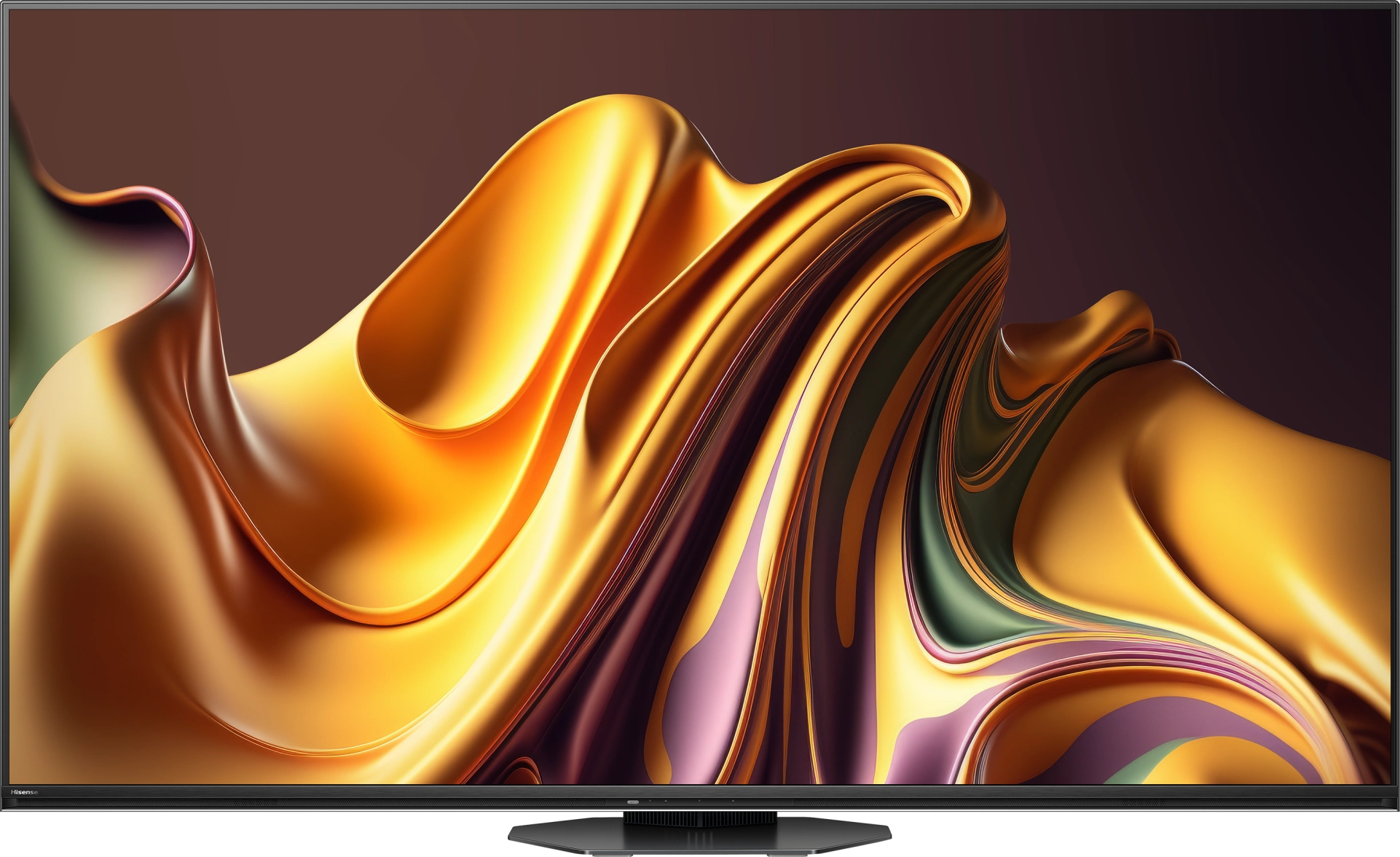
Panel type: QD-OLED
Resolution: 3840x2160
System: Tizen
Model year: 2024
Complete the survey to find out the result

Panel type: LCD VA
Resolution: 3840x2160
System: VIDAA
Model year: 2025
Complete the survey to find out the result

Overall rating
8.2
8.0
Movies and series in UHD quality
8.5
7.8
Classic TV, YouTube
9.2
7.6
Sports broadcasts (TV and apps)
8.9
7.2
Gaming on console
9.6
8.6
TV as a computer monitor
8.6
8.4
Watching in bright light
5.3
8.2
Utility functions
7.4
9.4
Apps
8.7
7.7
Sound quality
7.4
7.8
Complete the survey to find out what fits your preferences
Advantages
Perfect black (OLED)
Great for 4K and HD content
Excellent for gamers - 144hz, HDMI 2.1, low input lag.
Among the best viewing angles on the market
High coverage of a wide color gamut
Above-average sound quality
Great blacks and contrast
Incredibly high brightness
Full package of HDR formats: HDR10, HDR10+, Dolby Vision
Good motion smoothness - 165Hz panel
Exceptional usability in difficult lighting conditions (High brightness + New anti-reflective coating on the panel)
Many features for gamers, VRR, ALLM, HDMI 2.1, 288Hz for PC
All 3 ports in HDMI 2.1 standard (Finally!)
USB-C with video signal output capability (Displayport)
Many features in the Vidaa system
Support for DTS and Dolby Atmos
Disadvantages
No support for DTS soundtracks (may be an issue with external players)
Black levels issues during the day
Missing some apps on the Vidaa operating system
At maximum volume, the television slightly shakes
The television tends to "burn out" the image in 4K HDR content.
Our verdict
Hisense U8Q is a television that makes it hard not to feel that the manufacturer approached the topic with the ambition of a top student. The picture is strong, vibrant, and contrasted – as if it’s shouting: “look, I can do more than most at this price!” And indeed, there is something to this. The secret lies in the large number of dimming zones in Mini-LED technology. Thanks to them, HDR doesn't just end with promises from the brochure, but can truly impress – especially during evening screenings. It's also hard to complain about motion smoothness. Watching matches and fast-paced games is enjoyable, and while the ball may leave a slight trail at times, it will be a negligible detail for 99% of viewers in everyday watching. Gamers also have reasons to be pleased here – although it should be mentioned right away that there is no HGiG feature. Other than that, it’s really good: low input lag, three HDMI 2.1 ports, and a full set of gaming features make the U8Q stand out as one of the more interesting Mini-LEDs for console fans. Of course, there are no perfect products. The television still carries some "miniLED" quirks, and the Vidaa system – although packed with features – can be less intuitive and has a more modest selection of apps compared to competing platforms. But are these serious flaws or rather minor drawbacks in the context of price and what we actually get? We leave that question for you to answer!
TV appearance





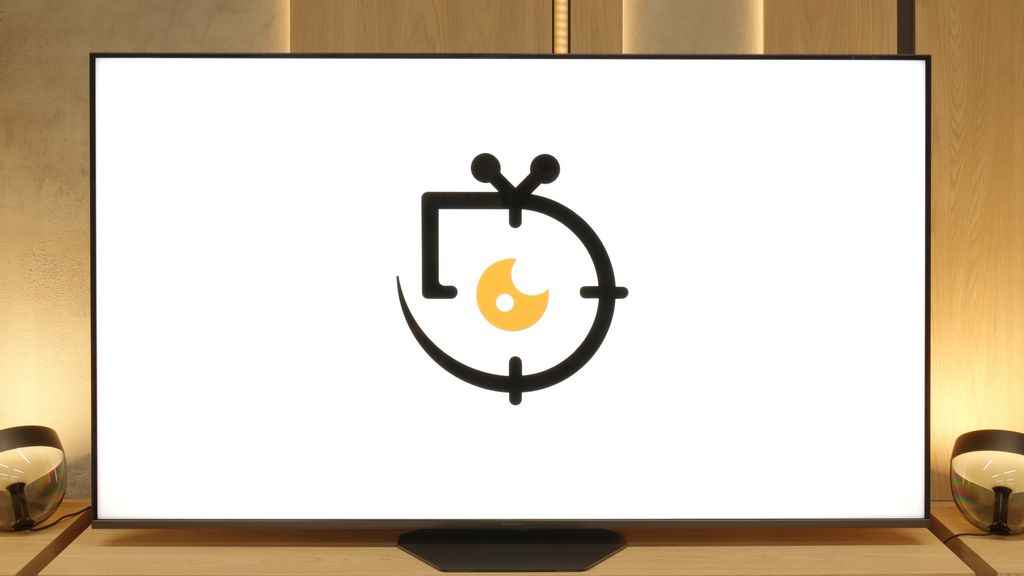
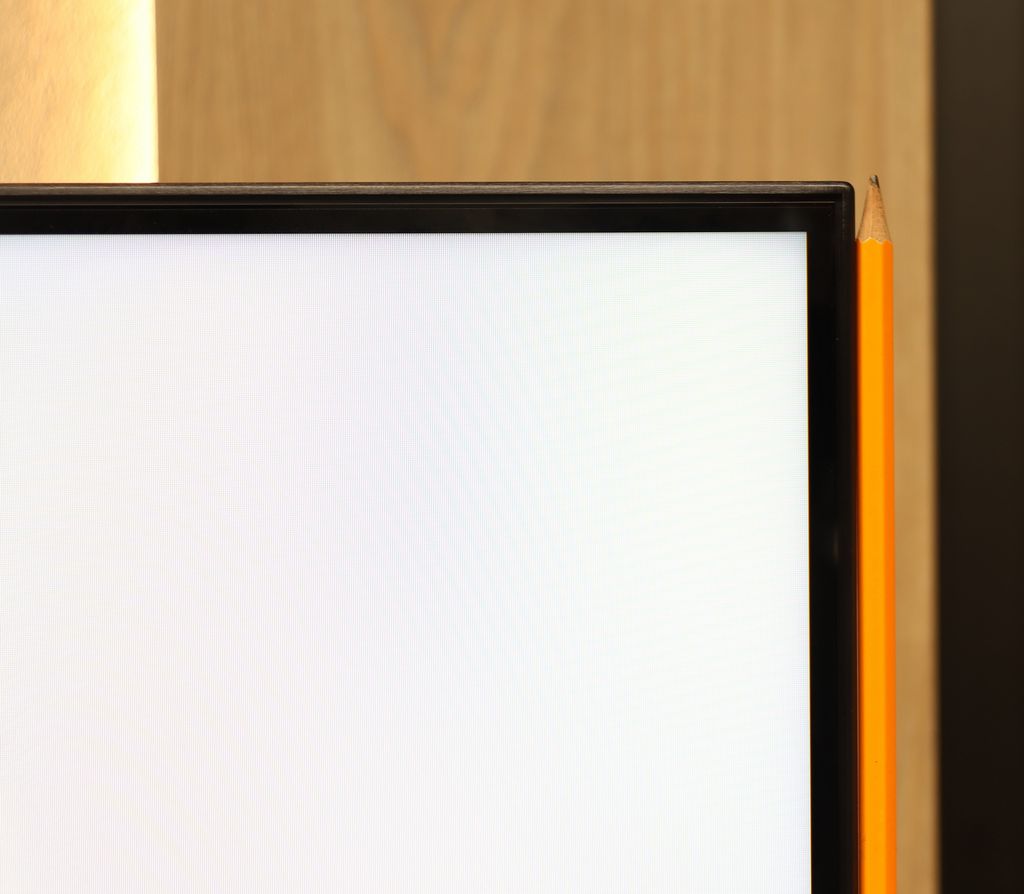
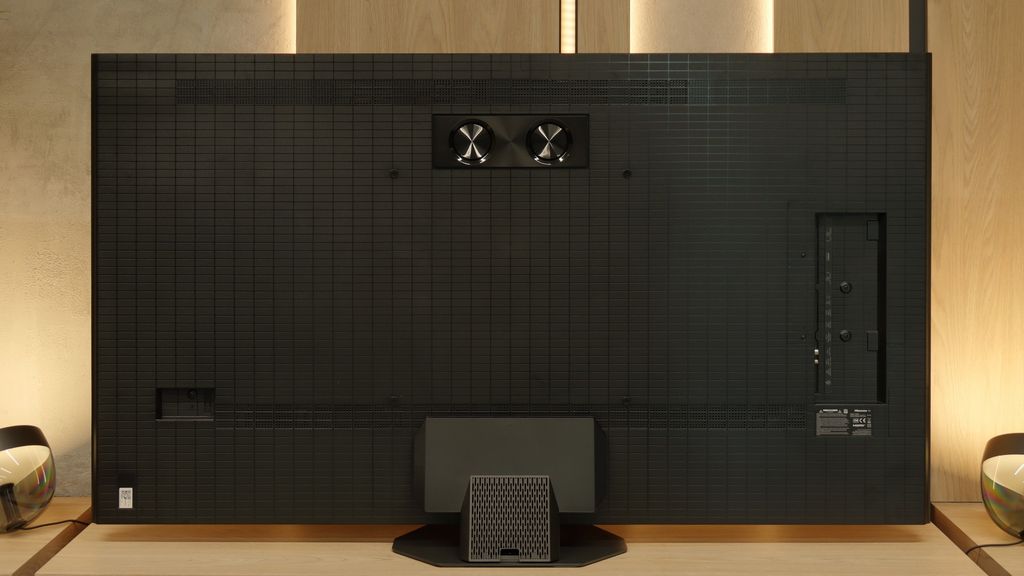
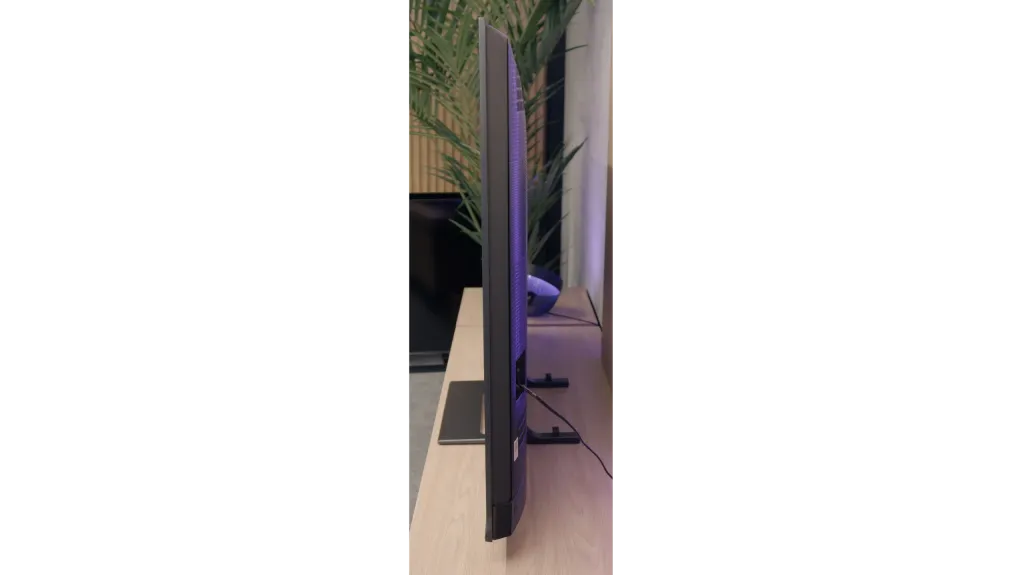
Contrast and black detail
10/10
8.6/10
Local dimming function: Yes, number of zones: 2048 (32 x 64)
Contrast:

Result
∞:1

Result
∞:1

Result
∞:1

Result
∞:1

Result
∞:1

Result
1,024,000:1

Result
140,000:1

Result
35,000:1

Result
22,350:1

Result
22,300:1
Halo effect and black detail visibility:

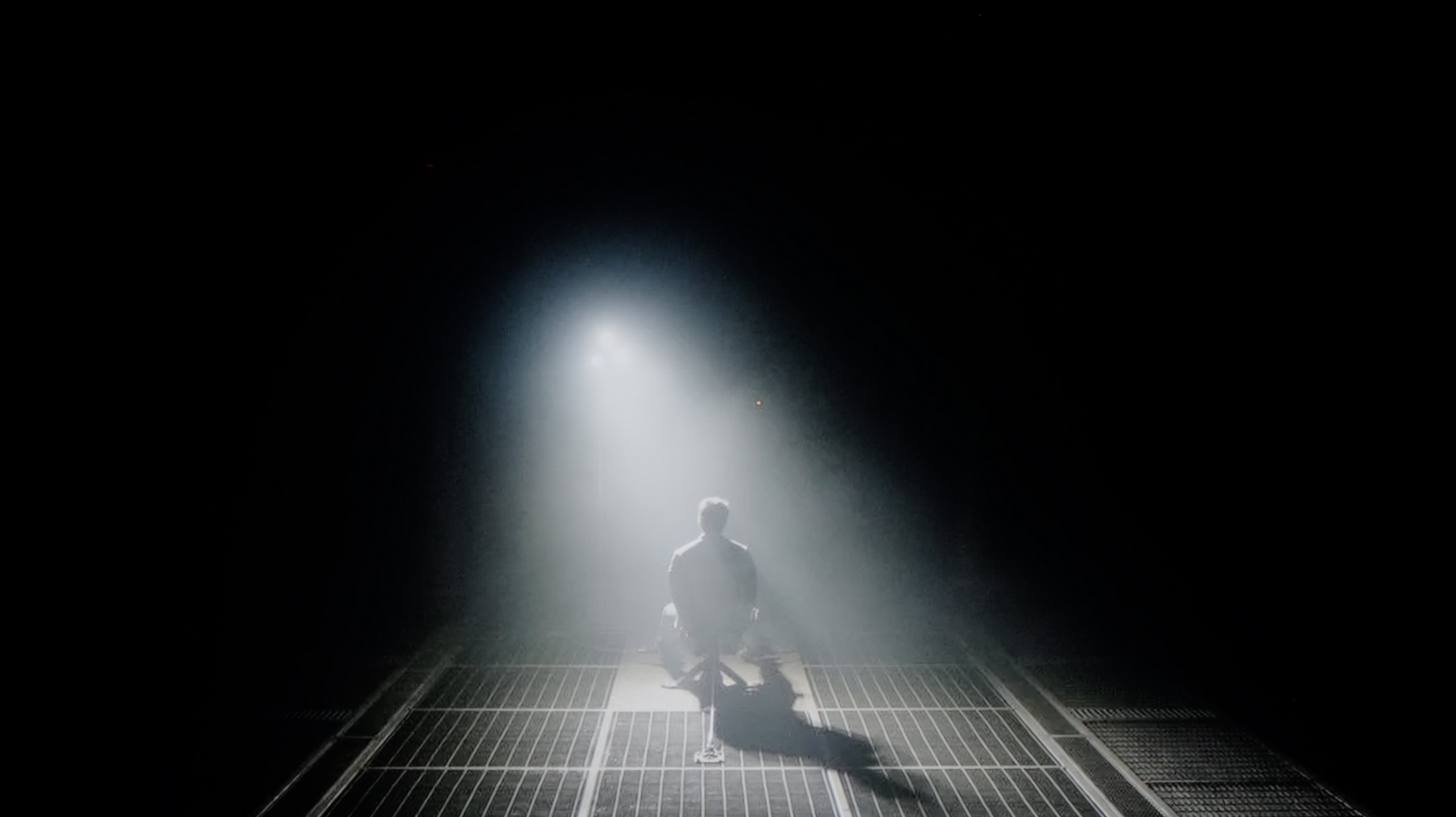
Samsung S90D, thanks to the use of a QD-OLED panel, offers excellent contrast, which is one of its greatest advantages. In QD-OLED technology, each pixel emits its own light, allowing for perfect blacks and precise detail reproduction in dark scenes. Unlike traditional LCD panels with backlighting, where blacks often appear greyish, turned-off pixels in QD-OLED remain completely black. As a result, the television provides a dynamic, realistic image with exceptionally deep contrast. For example, in scenes from "Oblivion," the Samsung S90D brilliantly captures the intensity of the lantern lights, highlighting details in the bright areas of the image, and in "The Revenant," it perfectly showcases the character against the backdrop of a deep, black forest scene, emphasizing impressive contrast reproduction. It is worth noting that in the Samsung S90D model, only this specific size is equipped with the QD-OLED panel produced by Samsung Display, setting it apart from other versions. Nevertheless, regardless of the panel used, the blacks on this television will always be perfectly black thanks to OLED technology, which turns off pixels for absolute blackness. This means that in categories such as black levels and contrast, the S90D delivers excellent picture quality regardless of the type of panel.
The unit we tested, the Hisense U8Q in 65 inches, is equipped with a VA panel that offers high native contrast on its own. However, this is not the biggest strength of this model—the key lies in the Mini LED backlighting. With the use of thousands of dimming zones and a well-tuned light management algorithm, the contrast in the U8Q can be described as excellent, especially for a TV of this technology.
The best results reach around a million to one—a result that is impressive and places the U8Q among the top Mini LED TVs. Yes, there are certain issues and even drops in contrast, but they are not as dramatic as with many other models in this class that we have tested on our portal. It's also worth noting that like every Mini LED TV, the U8Q is not completely free from typical imperfections—sometimes the picture can be dimmed too much, or there may be slight blooming effects with a halo. However, this does not change the overall impression: the contrast in the Hisense U8Q is stunning and is one of the greatest assets of this model.
HDR effect quality
6.6/10
7.6/10
Luminance measurements in HDR:

Result
833 nit

Result
904 nit

Result
913 nit

Result
927 nit

Result
478 nit

Result
2195 nit

Result
725 nit

Result
1652 nit

Result
485 nit

Result
1541 nit
Scene from the movie “Pan” (about 2800 nits)


Scene from the movie “Billy Lynn” (about 1100 nits)


Static HDR10


Dynamic: HDR10+
Dynamic: Dolby Vision


HDR luminance chart:
Hisense U8Q
Luminancja HDR
Luminance of RGB colors
Samsung QD-OLED S90D / S94D
Luminancja HDR
Luminance of RGB colors
In the HDR effect quality category, Samsung S90D achieves remarkable results. On the luminance chart up to 10% window, the TV exceeds the magical threshold of 1000 nits, which is an impressive outcome. However, in the film scenes we tested, these values were slightly lower. Additionally, in the case of a scene with fullscreen sunlight glare, brightness drops to around 500 nits, but it still remains at a very good level. It is worth mentioning that this model stands out with very high colour gamut coverage, thanks to the QD-OLED panel used, which gives it an advantage over TVs with WOLED panels that cannot achieve such a wide spectrum of colours.
When it comes to HDR, the Hisense U8Q shows its claws. On paper, meaning in synthetic measurement tests, the TV can "push out" nearly 4000 nits of peak brightness. This is a value that most models can only envy. In practice, this translates to very strong light effects in movies – in some scenes we managed to measure real levels from 1500 to 2000 nits, which is a level usually reserved for the absolute top-tier TVs on the market.
Of course, it's not always so perfect. In small, point-like elements, brightness can drop – a good example is scene number 4 from the movie Sicario 2, where instead of thousands of nits we get about 500. But it's worth noting that the effect doesn't disappear completely – the light is still visible, and the image doesn't appear artificially dimmed. This is a typical issue with Mini LEDs, so it’s hard to consider it a major drawback.
However, a huge plus has to be granted for colour reproduction. Thanks to additional coatings improving colour saturation, the U8Q almost covers the entire DCI-P3 colour space (98%), and for the wider BT.2020 gamut it achieved over 80%. This is an excellent result that makes HDR films look juicy, intense, and just very cinematic.
Factory color reproduction
7.1/10
7/10


Factory Mode
After calibration


Factory Mode
After calibration
Samsung 65 S90D with a QD-OLED panel has been tested in Filmmaker mode, which the manufacturer has been using for years to provide the best possible picture settings. In this mode, the TV offers a fairly decent image but with some shortcomings worth noting. In terms of white balance in HD content, viewers may notice a dominance of the red color. This effect can lead to the impression that certain skin tones appear unnatural and the overall scene will be too warm, which in turn can affect immersion in the watched material. In scenes where subtle differences in color are crucial, these distortions can be particularly noticeable. Similar sensations may also occur in 4K HDR content. Changes in white balance in this case can be analogous, with a noticeably smaller deviation in red color. This can also cause certain details and colors to not be fully represented, making the image lose its naturalness.
When it comes to contrast, the gamma presents quite well, however, some errors are still noticeable. Gamma values are below the reference level of 2.4, which can result in bright areas of the image being washed out and dark areas lacking detail. This limitation can cause some scenes to lack depth and detail, which in turn affects the overall presentation quality. On the other hand, the EOTF curve related to contrast in 4K HDR content performs really well, showing that the TV can effectively convey differences in brightness. Nevertheless, it is worth noting that these values are slightly below the ideal level on the graph, indicating the need for further optimization in this regard.
Samsung S90D in Filmmaker mode offers solid color reproduction, but requires some adjustments to fully realise the potential of the TV, especially in the context of different types of content.
We have to admit that when the U8Q arrived in our editorial office, we were slightly surprised… and in a good way. Usually, white balance in televisions immediately requires adjustment – it can be too warm or too cold, which immediately causes strange colour errors. Meanwhile, here the situation looks really good straight out of the box. Of course, we’re talking about our unit, so there’s no guarantee that every model will be tuned as well, but in our case, the first impressions were very positive. The only more noticeable issue was related to how the television manages brightness. Looking at the EOTF chart, it’s clear that the U8Q tends to brighten small elements on the screen. This, in turn, caused what we mentioned earlier – slight overexposure and the impression that the whole scene is a bit too bright. However, this is not a flaw that negates the picture, rather an effect characteristic of this model.
Color reproduction after calibration
8.9/10
8/10




After calibrating the TV, the Samsung S90D in film mode gains quality more than one might expect. The white balance for HD and 4K HDR content has been adjusted to near perfection. Although minor shortcomings can be noticed, they are subtle enough that they don’t significantly impact the overall picture quality. The colours have become more harmonised, aiding in the natural reproduction of details, particularly in scenes that require precise colour representation. It is worth noting that this model, in this size, uses a QD-OLED panel which offers broader colour gamut coverage compared to other sizes of this model that are equipped with a WOLED panel.
The contrast has also significantly improved. After calibration, the gamma graph is much closer to the expected line, providing a better balance between light and dark tones in the picture. The EOTF curve, which before calibration indicated issues with overexposed scenes, now shows significantly better results. This effect allows for the retention of more details in the bright areas of the image, especially in HDR materials.
Of course, we wouldn’t be ourselves if we didn’t make adjustments to the white balance. After calibration, we managed to level the SDR signal to near perfection – older films, YouTube content, and classic television looked nearly ideal on the U8Q. It’s truly an impressive level that shows this model can do a lot if given a bit of help. Unfortunately, the situation is different with HDR content. The colours themselves don’t pose much of a problem, but the biggest issue with the U8Q remains the EOTF brightness characteristics. In practice, the television tends to "shoot" above how the image should originally look. It’s this slight "blowout" we noticed earlier in comparisons with the best screens on the market. It’s a bit of a shame that this characteristic can't be completely tamed – if we could maintain equally good brightness control in HDR as we do in SDR, we would be looking at an absolutely reference-level image.
Smoothness of tonal transitions
8.6/10
8.9/10





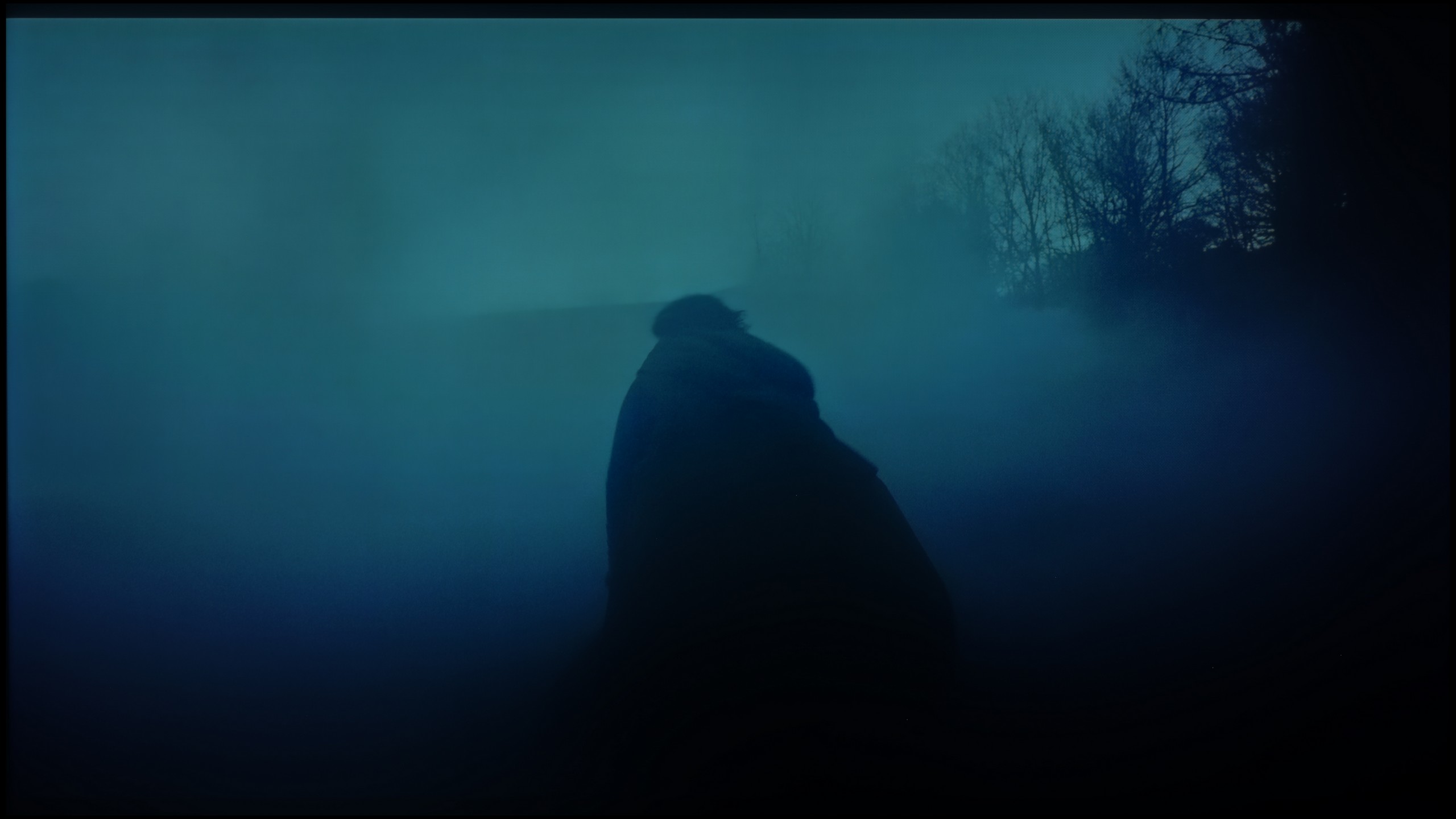






In the category of fluid tonal transitions, the television S90D exhibits significantly better results than its counterpart with a WOLED panel. Thanks to the use of a QD-OLED panel, this model provides more consistent and natural transitions between colours. Although some minor imperfections were noted during testing, they are subtle enough not to impact the overall visual experience. When watching various video content, tonal transitions are smooth and harmonious, allowing viewers to enjoy the depth and detail of the image without irritating distractions. In tested scenes where colour changes are particularly important, such as in landscapes or dynamic sequences, the television Samsung S90D performs excellently, rendering differences in shades with adequate precision.
When it comes to tonal transition fluidity, the Hisense U8Q left a really great impression on us. Even in the darkest scenes, where usually other TVs show ugly banding and unpleasant transitions, here the picture remains smooth and cohesive. Nothing is separating, there's no "banding" effect – everything looks just as it should. Similarly, in brighter shots – it's also very good. Sure, if we were looking through a magnifying glass, we might find some minor flaws, but in normal viewing, it's hard to pick on anything. Overall, it performs very, very well!
Image scaling and smoothness of tonal transitions
8/10
8/10
Smooth transition function

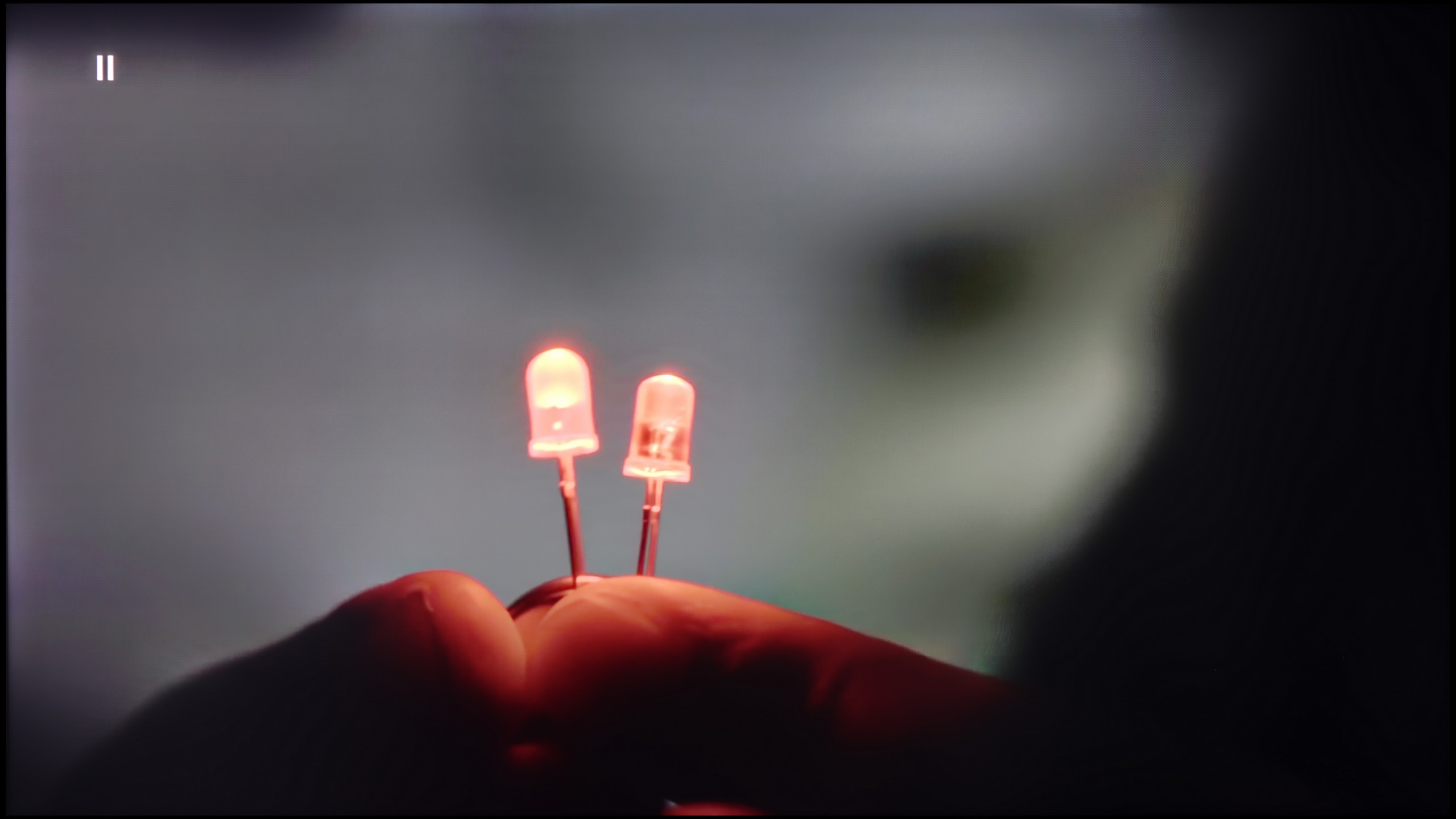
Image without overscan on the SD signal


The television handles tonal transitions excellently, allowing colours to flow smoothly into each other, creating a natural image. The built-in noise reduction feature can further enhance these transitions, which can be useful in certain situations. However, it is worth remembering that activating this option may lead to excessive smoothing of the desired film grain structure, which in turn can affect the authenticity and atmosphere of the image. Therefore, caution is recommended when using this feature to avoid losing the character and depth of the content.
The Samsung S90D model effectively processes materials in lower resolutions. This can be seen in the displayed image. The model's silhouette is clear and naturally reproduced, with details well preserved. Additionally, the branches of the trees are well-defined, showing no visible jagged edges that could degrade the quality of the image. Thanks to effective upscaling, even lower resolution materials look attractive on the screen, which will surely please users enjoying a variety of content sources, such as standard cable or antenna television.
Hisense U8Q handles lower quality materials quite well. The television can smooth tonal transitions thanks to the “Smooth and Gradient Picture” feature – it works best on the Medium setting. It nicely dims unwanted bands and irregularities in the image, but importantly, it doesn't remove the film grain or fine details.
The upscaling itself is also at a good level. Image from lower resolutions appears smooth and soft, sometimes a bit too much – we get a plastic effect that may not appeal to everyone. Fortunately, this can be easily corrected with the sharpness slider, allowing you to adjust the image to your personal preferences.
Blur and motion smoothness
8.5/10
7.8/10

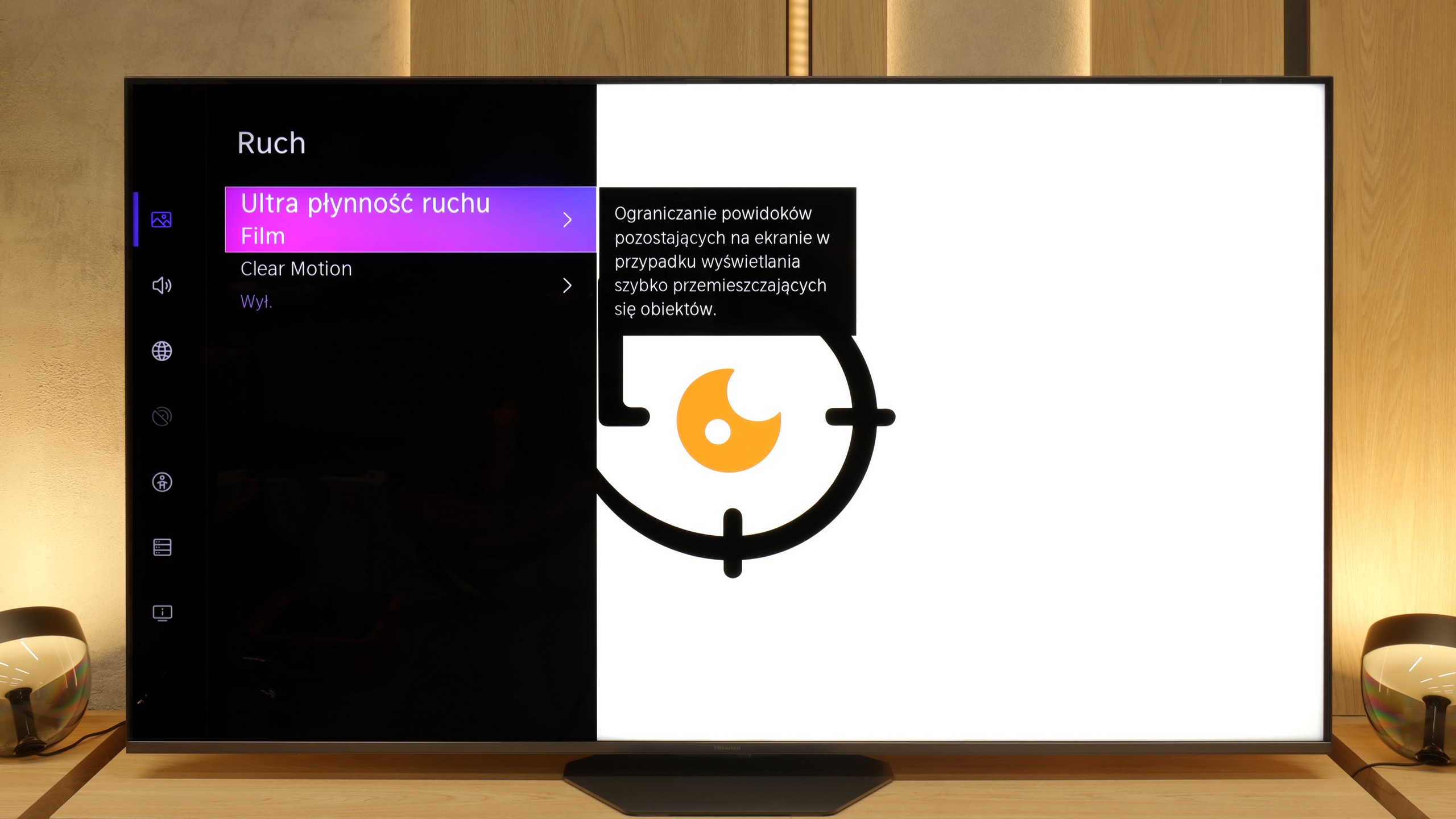
Blur (native resolution, maximum refresh rate):



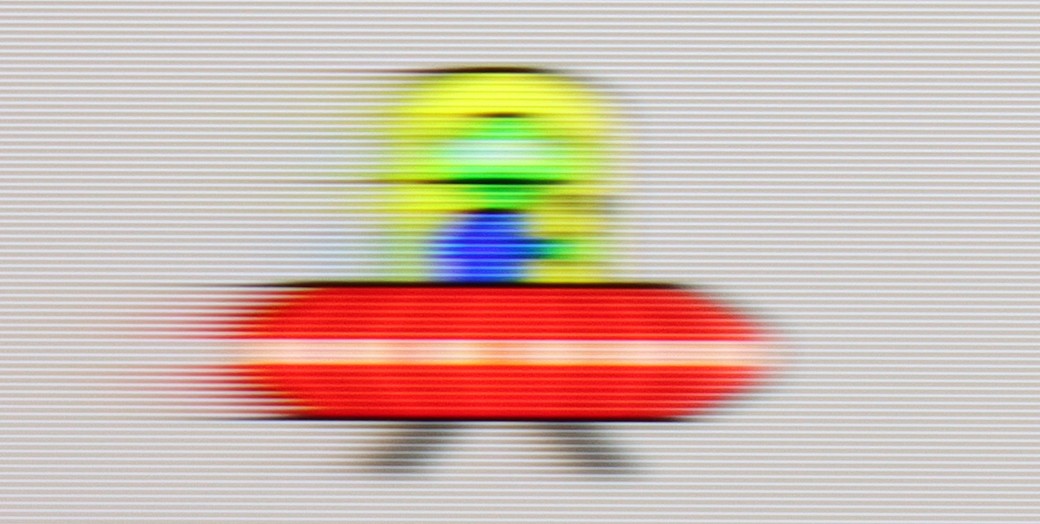
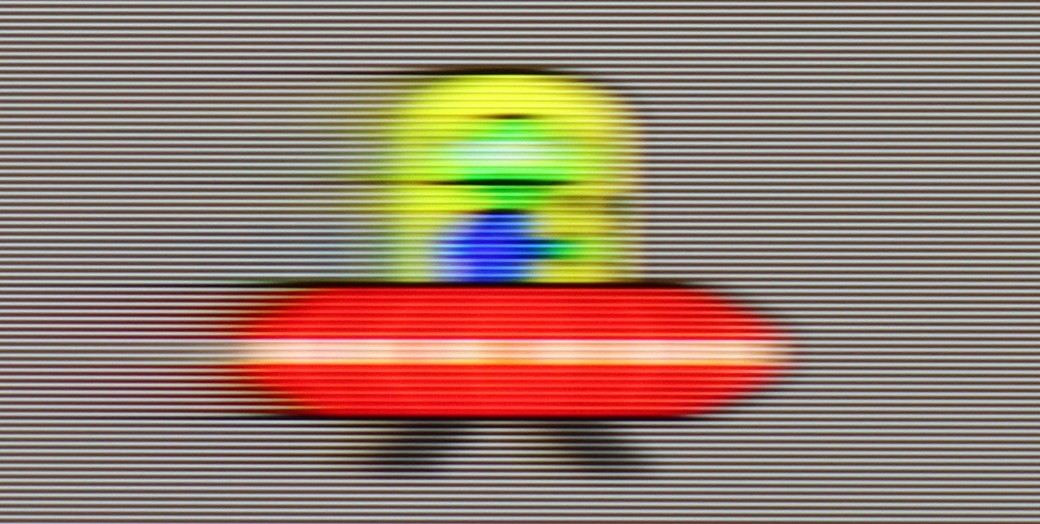
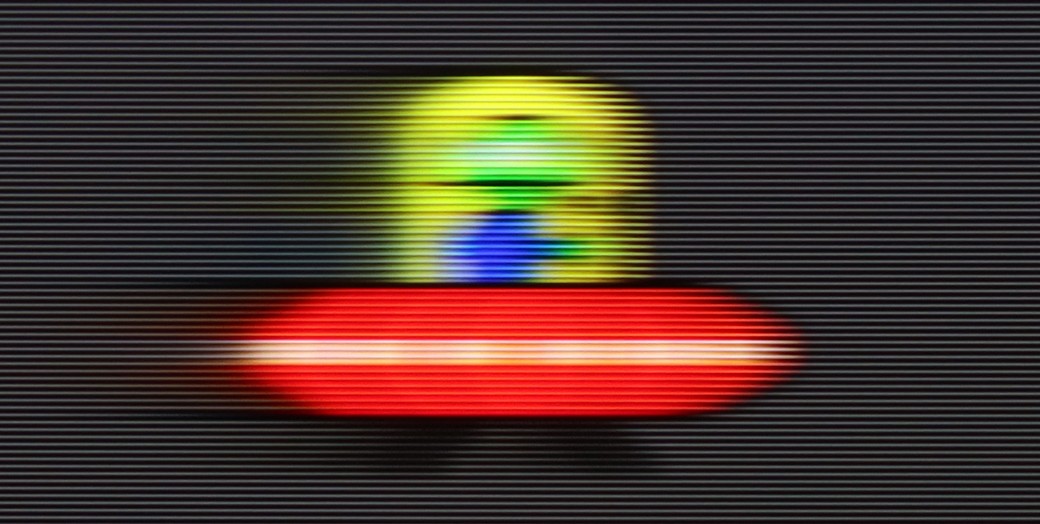
Blur (BFI function enabled):
Image flickers in this mode



Smużenie ():
Smużenie (1080p@288Hz):

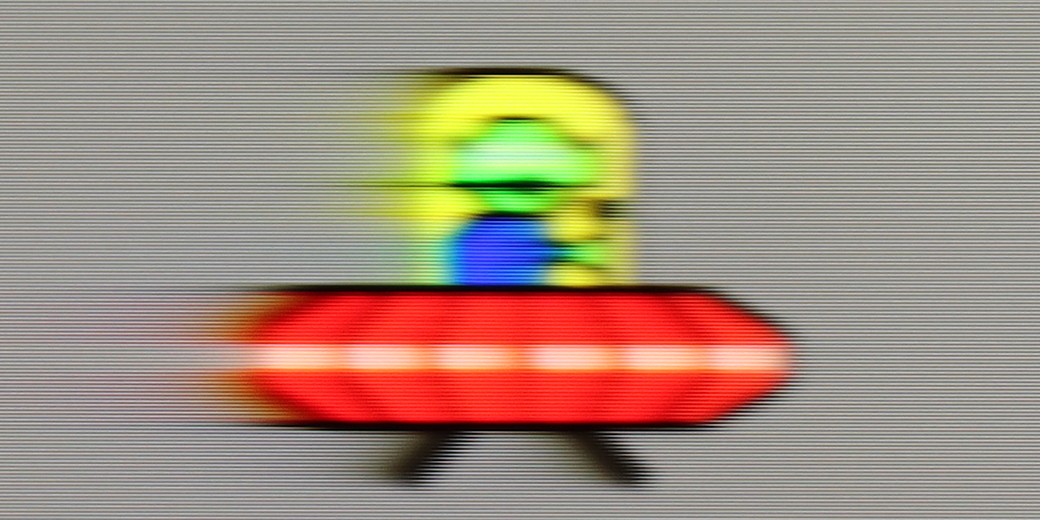
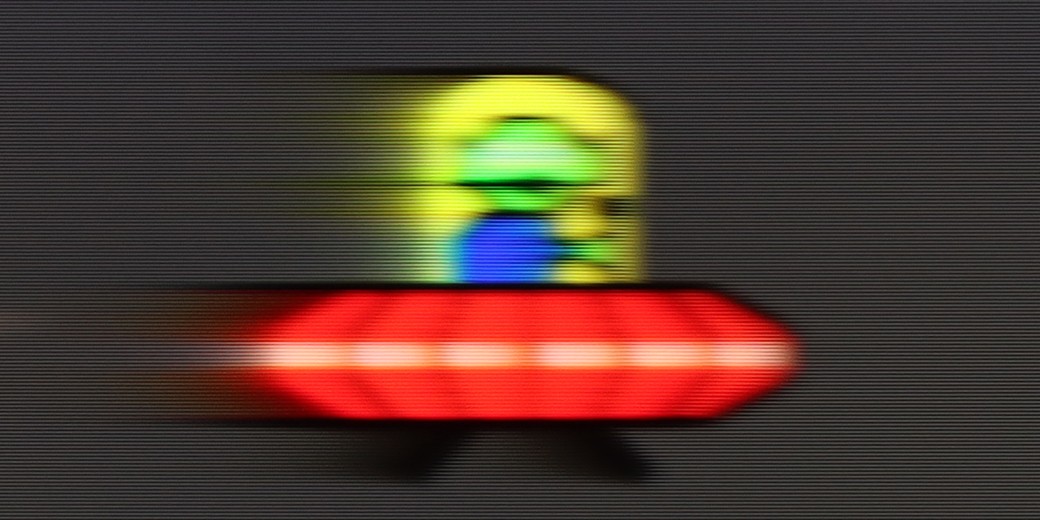
Samsung S90D TV, equipped with a refresh rate panel of 120 Hz, and in the appropriate PC configuration even 144 Hz, ensures excellent motion fluidity. Samsung focuses on a variety of image clarity settings on a ten-point scale, giving users the freedom to adjust the display to their own preferences. In UFO tests, the OLED panel shows its strengths, eliminating any blurring. The lightning-fast pixel response makes dynamic movements faithfully reproduced.
Similar results can be observed in other sizes of this model with a WOLED panel, which also offer excellent image fluidity. Organic technology, in this case, is considered one of the best on the market. The picture of Samsung S90D, regardless of the type of panel, is incredibly sharp and detailed, making this TV perfect for dynamic scenes, both during gaming and sports broadcasts. Additionally, its capabilities in terms of refresh rate and clarity ensure that every movement is smooth and natural, which will certainly satisfy even the most demanding users.
Hisense U8Q has a panel that can refresh the image up to 165 Hz in 4K resolution. In practice, this will mainly benefit PC gamers, but as they say – better to have it than not 😊. For movies and series, we have a built-in smoother called Ultra Motion Smoothing. In the settings, it can be easily adjusted to your own preferences – whether you want a more ‘cinematic’ frame rate or a smooth, theatrical spectacle.
Console compatibility and gaming features
9.5/10
8.5/10
- ALLM
- VRR
- VRR range48 - 144Hz48 - 288Hz
- Dolby Vision Game Mode
- Correct implementation of HGIG
- 1080p@120Hz
- 1440p@120Hz
- 4K@120Hz
- Game bar

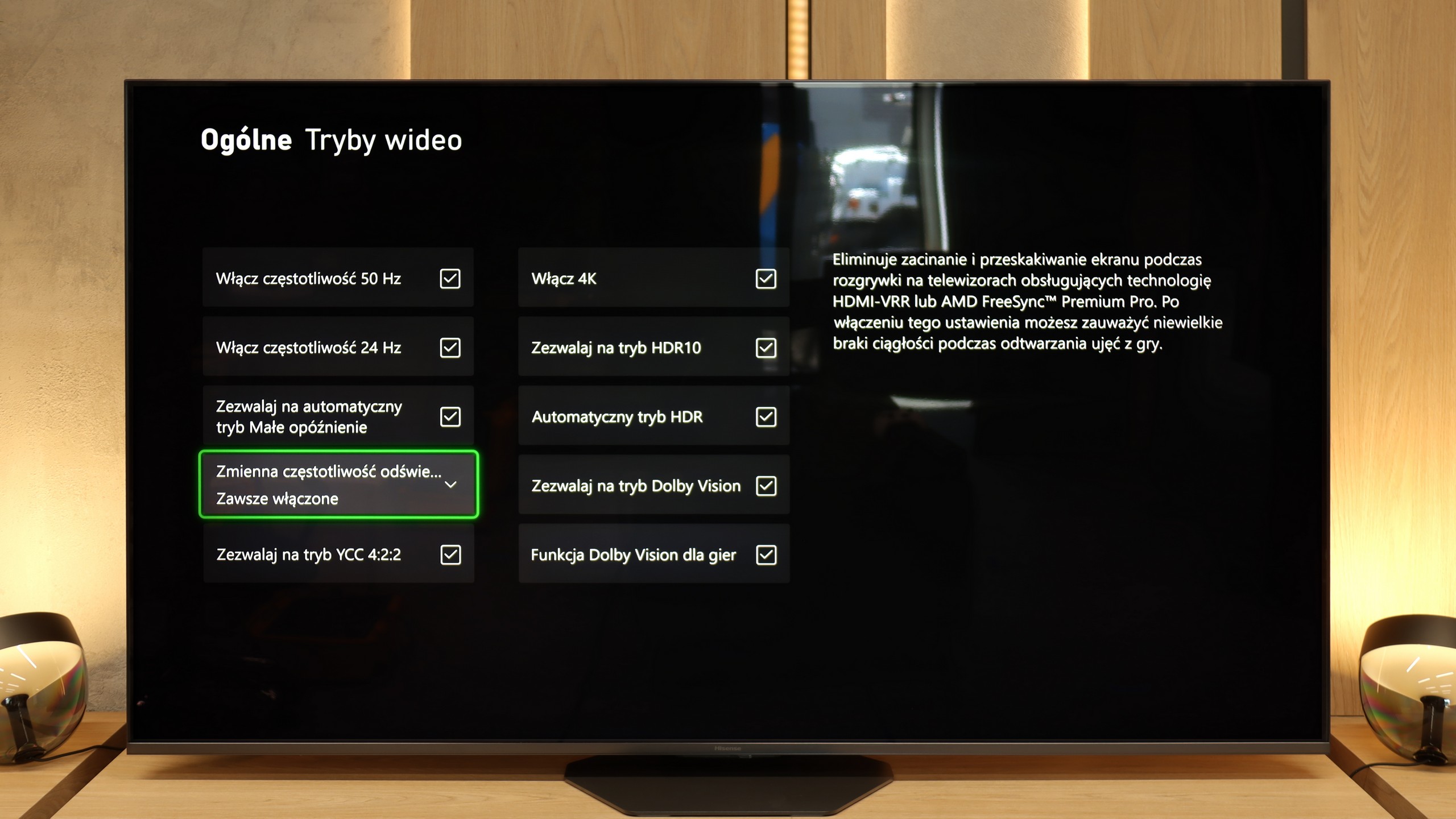

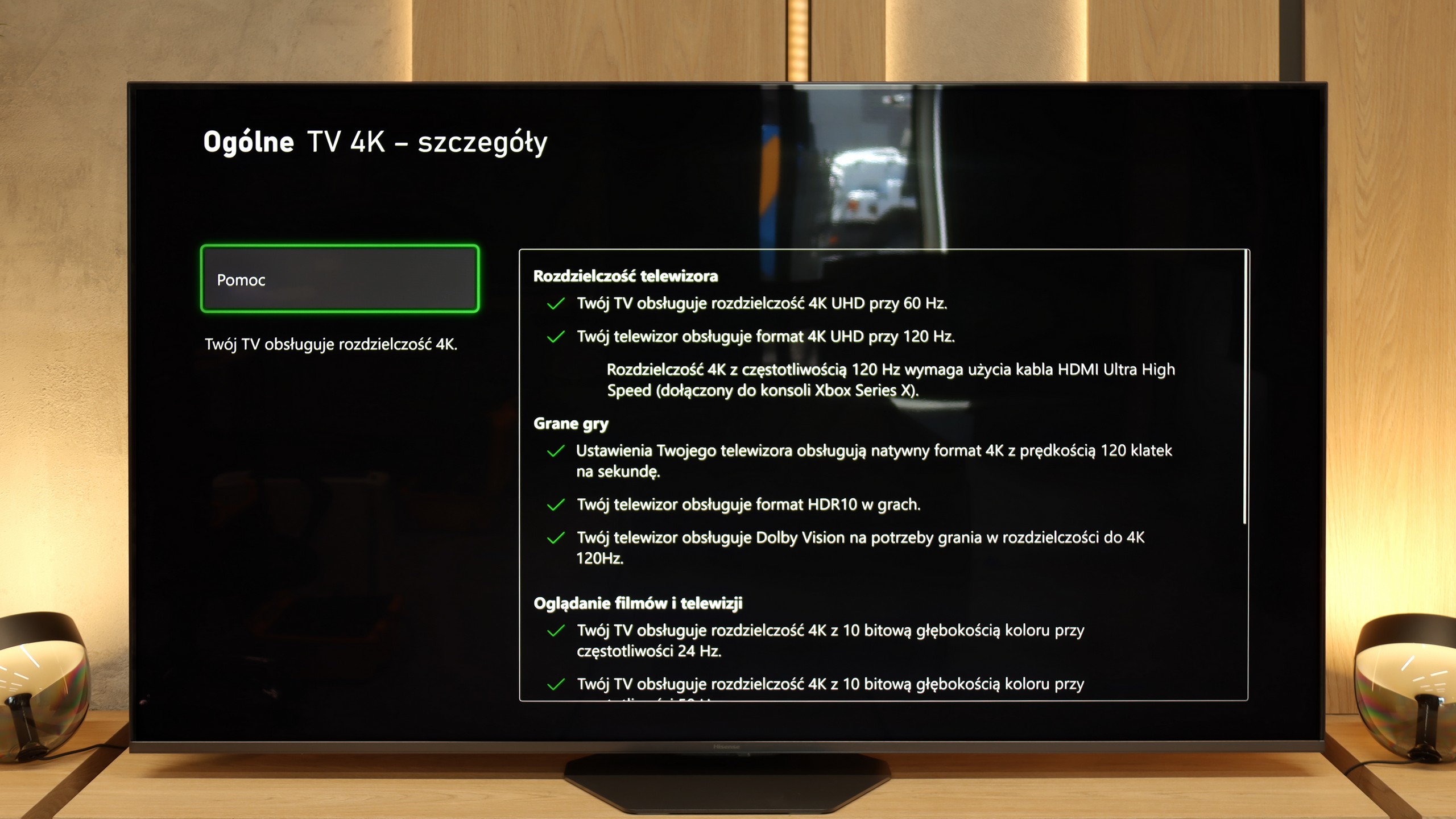

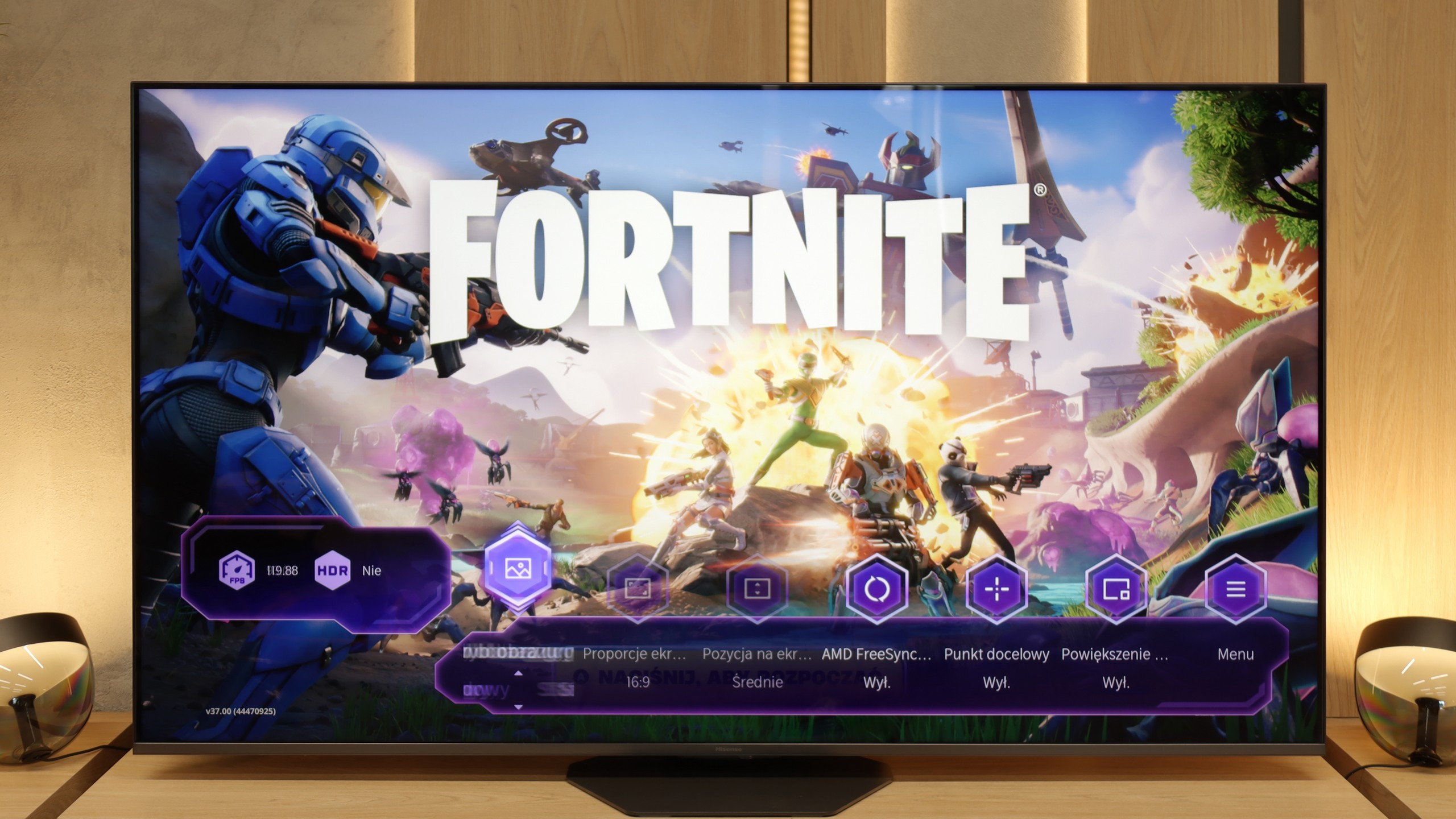

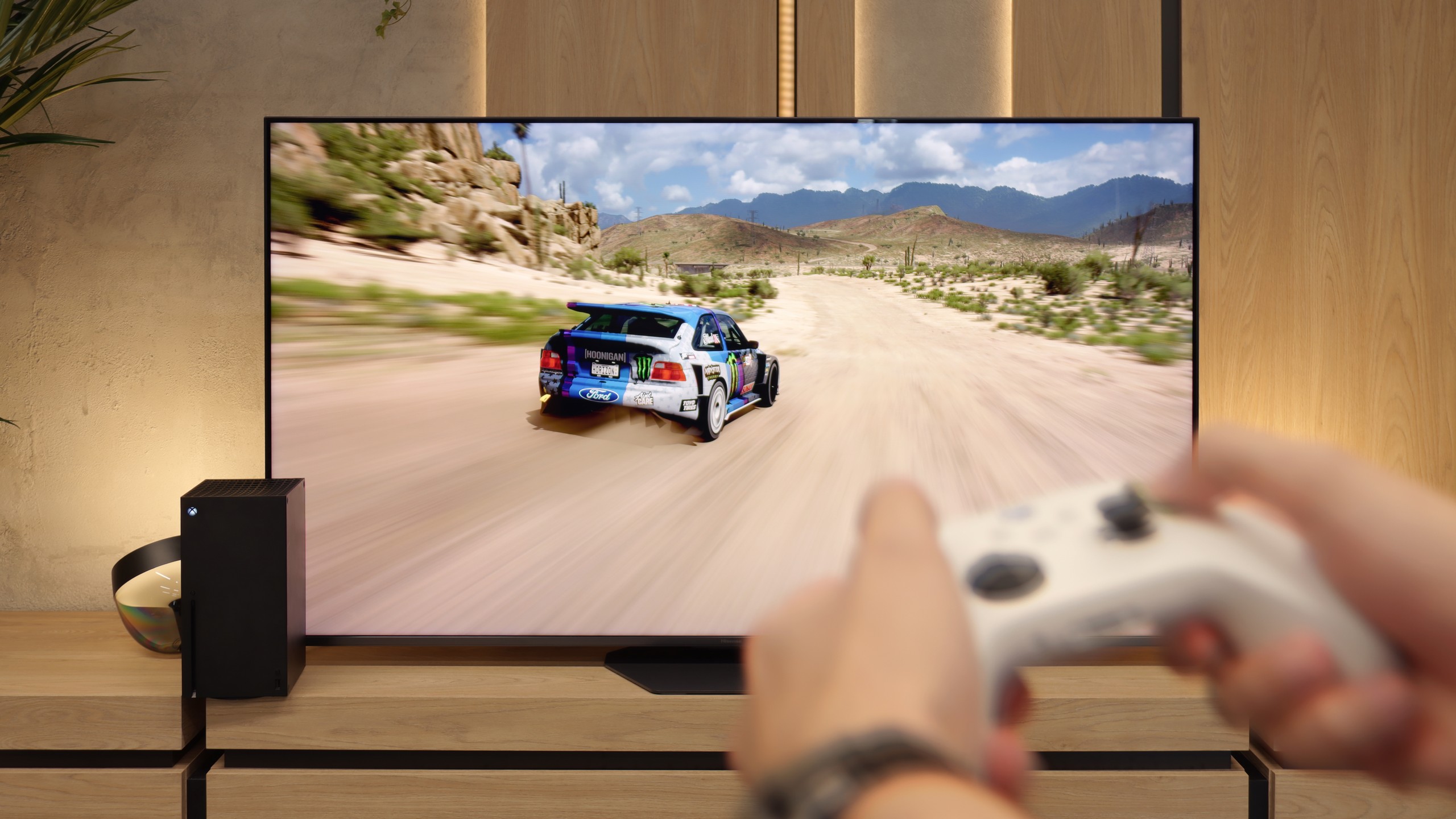
Television S90D is an excellent solution for gamers, offering a range of advanced features that elevate the gaming experience to a new level. Equipped with the HDMI 2.1 standard, the model supports modern technologies such as VRR (Variable Refresh Rate) and ALLM (Auto Low Latency Mode). Thanks to these solutions, the image is incredibly smooth, and the response to commands is instantaneous, which is crucial in dynamic titles. Additionally, the S90D supports HLG (Hybrid Log-Gamma) and G-Sync and FreeSync image synchronisation. This allows for a perfect connection with the Xbox, PlayStation, or PC, eliminating issues with tearing and stuttering. The built-in operating system offers the Xbox Game Pass app, providing access to a massive library of games directly from the television. This solution makes gaming even more convenient and accessible. The Game Bar feature provides quick access to important information, such as current settings, performance statistics, and the ability to adjust image options. This allows for on-the-fly modification of display parameters, which is incredibly useful during intense gameplay. Despite lacking support for Dolby Vision, Samsung S90D still delivers excellent HDR image quality, allowing for full utilisation of the potential of games and films. As a result, S90D represents a unique combination of modern technologies, excellent image quality, and intuitive features, perfect for any gaming enthusiast.
In terms of features, the Hisense U8Q has practically everything one would expect from a modern gaming television. Thanks to the new processor, the manufacturer has managed to implement three HDMI 2.1 ports, so there’s no trouble connecting multiple consoles or a computer. On top of that, it includes all the key technologies – Game Bar with parameter previews, variable refresh rate (VRR), automatic game mode (ALLM)… in a word, a complete set.
But as often happens with Hisense, it’s missing just a bit from perfection. The biggest drawback remains the lack of support for the HGiG format, which allows the TV's brightness to be adjusted to the console and gets the most out of HDR in games. It’s a shame because if this feature were included, we’d have a device practically made for gamers. As it stands, the U8Q remains “only” a very good choice 😉
Input lag
10/10
9.8/10
SDR
HDR
Dolby Vision
QD-OLED from Samsung stands out with an incredibly low input lag, making it an excellent choice for gamers. Regardless of the resolution or refresh rate, both in SDR and HDR mode, results around 10 ms are truly impressive. Such a low input lag ensures immediate response to actions on the screen, which is crucial in dynamic games where every millisecond counts. Users can enjoy smoothness and precision, which makes the S90D TV with QD OLED panel a superb option for those who prioritise performance in gaming.
The Hisense U8Q really performs well in terms of signal delay. In 120 Hz mode, the input lag is around 10 ms, and with 60 Hz content, it hovers around 18 ms. These are values that place it among the fast televisions, and in practice, it's hard to have any significant reservations about them. The reaction is instant, controlling a character or a car on screen occurs without noticeable delays. Regardless of whether someone is playing dynamic shooters or calmer narrative titles, the U8Q will perform excellently.
Compatibility with PC
8.6/10
8.4/10

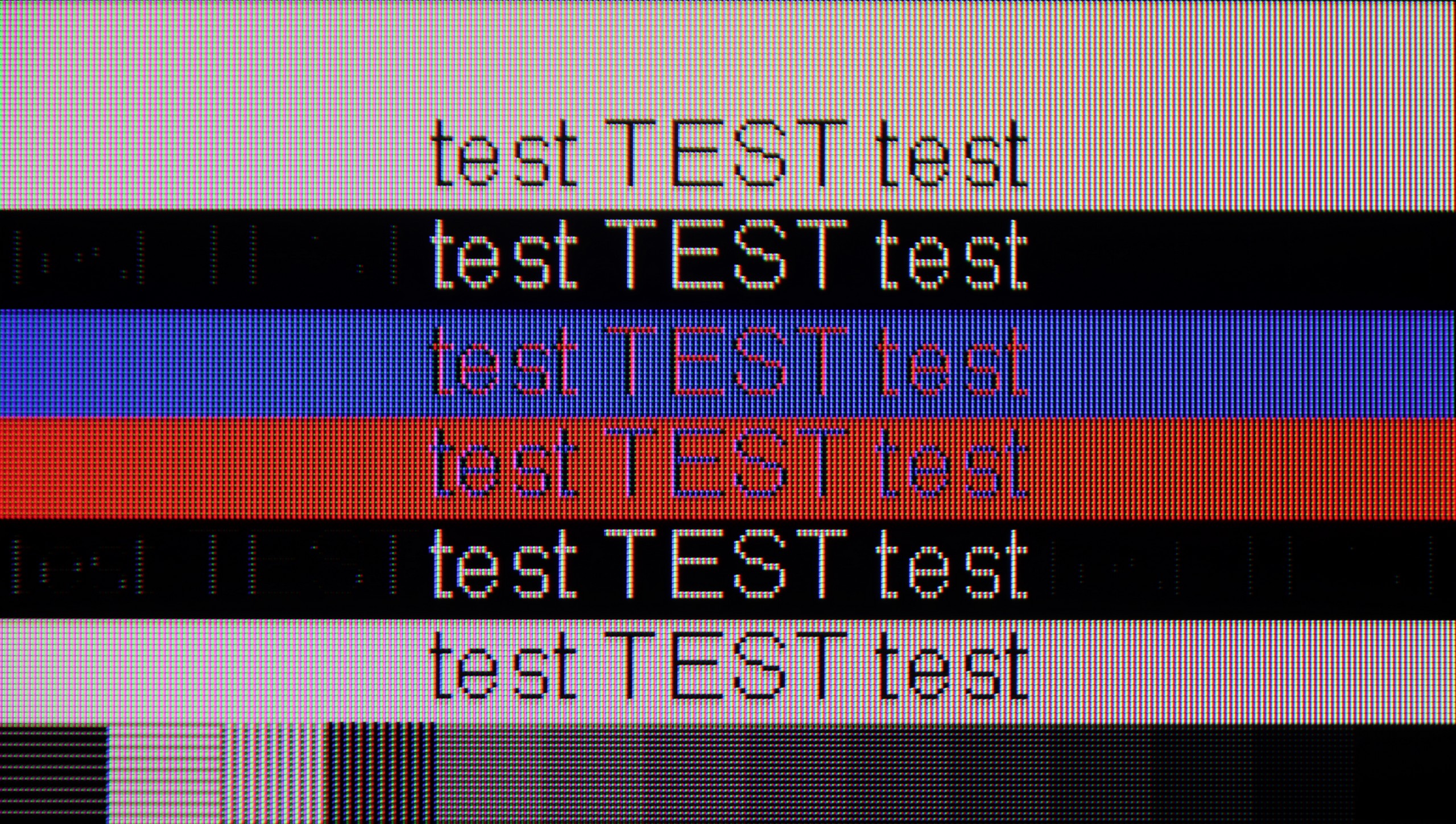
The Samsung S90D 65 TV performs excellently as a monitor for PCs. Fonts appear sharp, making it easier to read and use various applications. Support for chroma 4:4:4 at a resolution of 4K and a refresh rate of 144 Hz ensures full colour reproduction and outstanding image clarity. Moreover, the impressive input lag of just 5 ms is a significant advantage, especially for gamers and professionals working with graphics. However, it should be noted that points were deducted in this category compared to the WOLED panel version due to the different diamond arrangement of sub-pixels, which may lead to the distinct visibility of individual sub-pixels when displaying fonts on a dark background. This issue only pertains to the 65-inch version, so users who plan to use the TV on their desk will not encounter these difficulties with smaller variants.
As we mentioned regarding the features for gamers – the Hisense U8Q also communicates well with computers. The 4K display with a refresh rate of 165 Hz is impressive on its own, and at Full HD resolution, it can even "overclock" to 288 Hz. This is great news for e-sports fans, where speed of reaction counts more than the highest quality of image. Additionally, it supports G-Sync and FreeSync, making gameplay smooth, without stutters or annoying frame tearing.
A pleasant surprise is the presence of a USB-C port with DisplayPort functionality for laptops or even phones. This is a true novelty in televisions, and it’s quite possible that Hisense will be a pioneer here, setting the direction for the competition.
However, when it comes to working with text, we must mention one minor inconvenience. Although the U8Q correctly handles chroma 4:4:4, it has difficulty displaying very thin, horizontal fonts. This means that some subtitles or interface elements may be hard to read. Most people aren’t buying this model with the intention of office work, but if someone had such a plan – it’s worth keeping this in mind.
Viewing angles
9.8/10
3.2/10
In the category of viewing angles, the S90D Samsung stands out as one of the best models on the market. While traditional OLED TVs already offer solid performance, the use of a QD-OLED panel in the S90D elevates the picture quality to an even higher level. Thanks to the combination of Quantum Dot technology with self-emissive pixels, users can enjoy excellent color accuracy and detail, even when watching the TV from a wide angle.
In terms of viewing angles, the Hisense U8Q performs averagely – typical for VA panels. It's a classic compromise: in exchange for much better blacks and contrast than with IPS panels, we have to accept that viewing from a wider angle doesn’t look as good. Colours start to lose their intensity, and the image lightens a bit. For someone sitting directly in front of the TV – it's fantastic. For someone who sits a bit off to the side – not so much.
TV efficiency during daytime
5.3/10
8.2/10

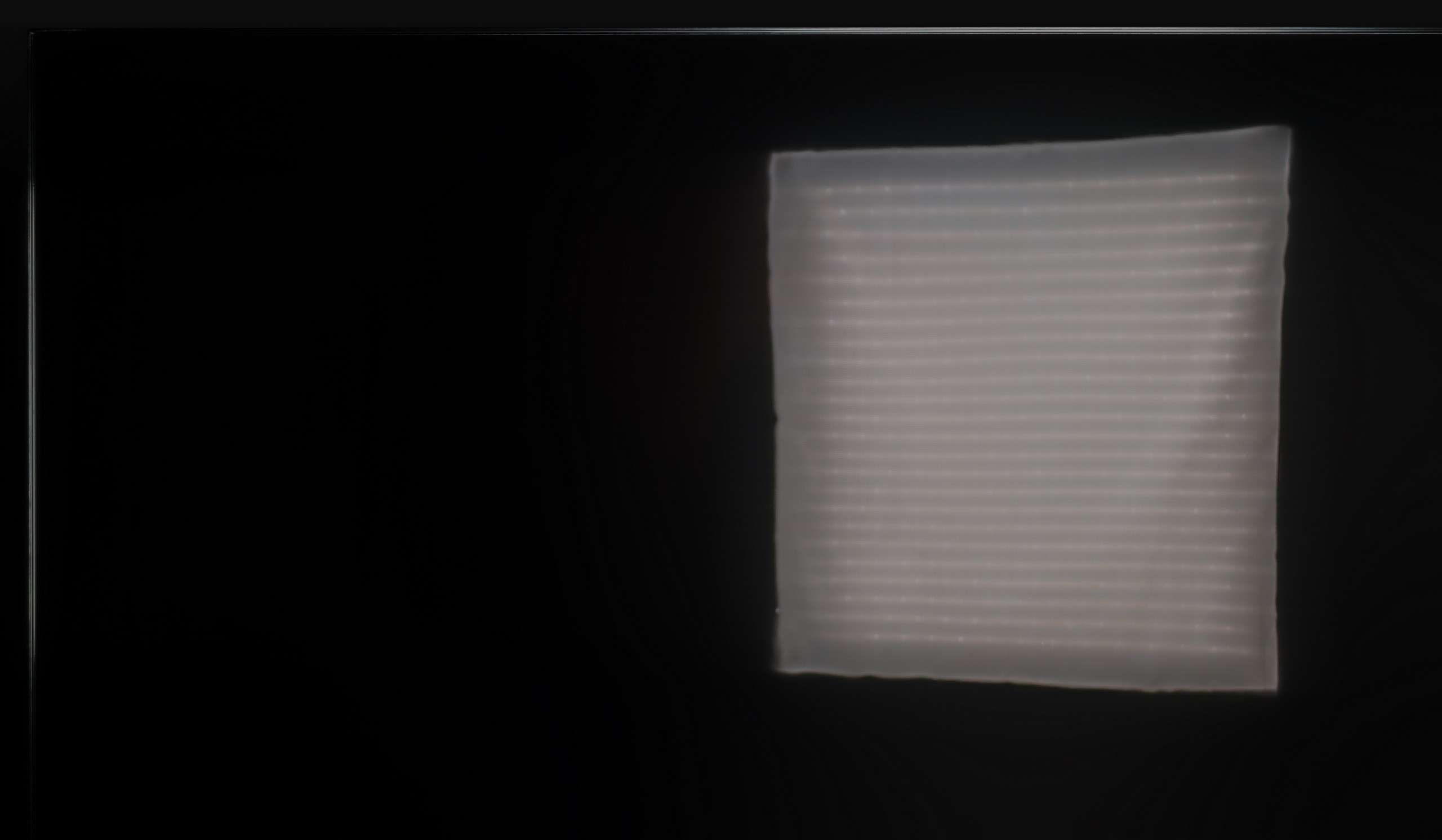


Matrix brightness
Average luminance SDR
Hisense U8Q: 914 cd/m2
Samsung QD-OLED S90D / S94D: 339 cd/m2
In the category of TV performance during the day, the model Samsung S90D 65 ranks the worst among the tested options. Although the glossy panel and good anti-reflective properties suggest some efficiency in bright conditions, the quality of blacks during sunny days proves to be the biggest issue. This phenomenon is caused by the close placement of quantum dots to the outer layer of the screen. Under the influence of external light rays, these dots can activate, resulting in the blacks on the screen becoming more cherry-like. This effect causes the image to lose depth and intensity, which can be particularly noticeable in darker scenes. As a result, users who plan to use the TV in bright rooms or under strong sunlight may encounter difficulties in achieving satisfactory image quality. However, when it comes to watching movies with a lot of black, this usually takes place in the evenings when the issue of intense sunlight is no longer as significant. In such conditions, the S90D performs significantly better, and users can enjoy a pleasant visual experience. During the day, while watching regular TV, the television also performs adequately, which means it is not a complete disqualifier for this model.
Hisense has introduced a new anti-reflective coating called Anti-Reflection PRO. It aims to improve viewing comfort in difficult lighting conditions – and it really does the job. Reflections don't disappear entirely, but they are well controlled and do not interfere with everyday viewing. However, the highlight is the brightness in SDR – around 1000 nits! That's a result that would make top super premium models proud. As a result, the U8Q performs excellently in sunny rooms and can definitely be considered one of the best televisions for daytime viewing.
Details about the matrix
Subpixel Structure:

Panel uniformity:

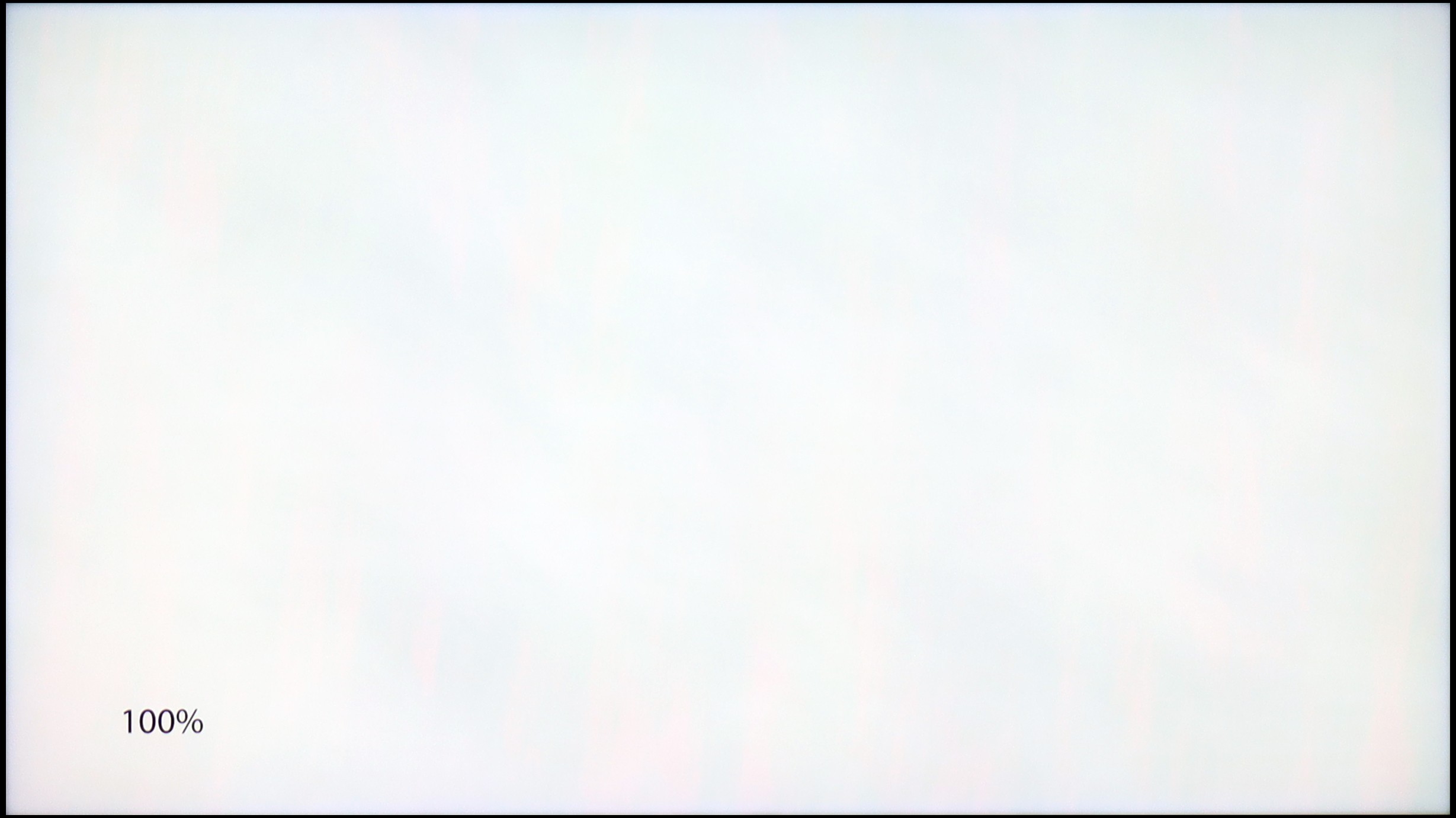
Samsung QD-OLED S90D / S94D
Hisense U8Q
TV features
7.4/10
9.4/10
- HDMI inputs0 x HDMI 2.0, 4 x HDMI 2.1 48Gbps0 x HDMI 2.0, 3 x HDMI 2.1 48Gbps
- Other inputsToslink (Optical audio), RCA (Chinch)
- OutputsToslink (Optical audio), eARC (HDMI), ARC (HDMI)eARC (HDMI), ARC (HDMI), Mini-Jack (Headphones)
- Network InterfacesWi-Fi 2.4GHz, Wi-Fi 5GHz, Ethernet (LAN) 100MbpsWi-Fi 2.4GHz, Wi-Fi 5GHz, Ethernet (LAN) 100Mbps
- TV receptionDVB-T, DVB-T2, DVB-S, DVB-S2, DVB-CDVB-T, DVB-T2, DVB-S, DVB-S2, DVB-C
Classic features:
- Recording to USB (terrestrial TV)
- Recording programming
- Picture in Picture (PiP)
- RF remote control (no need to aim at the screen)
- Backlit remote control
- Teletext
- Audio only mode
- Possibility to connect Bluetooth headphones to the TV
- Possibility to simultaneously use Bluetooth headphones and the TV speaker
Smart features:
- AirPlay
- Screen mirroring (Windows Miracast)
- Wyszukiwanie głosowe
- Voice search in native language
- Ability to connect a keyboard and mouse


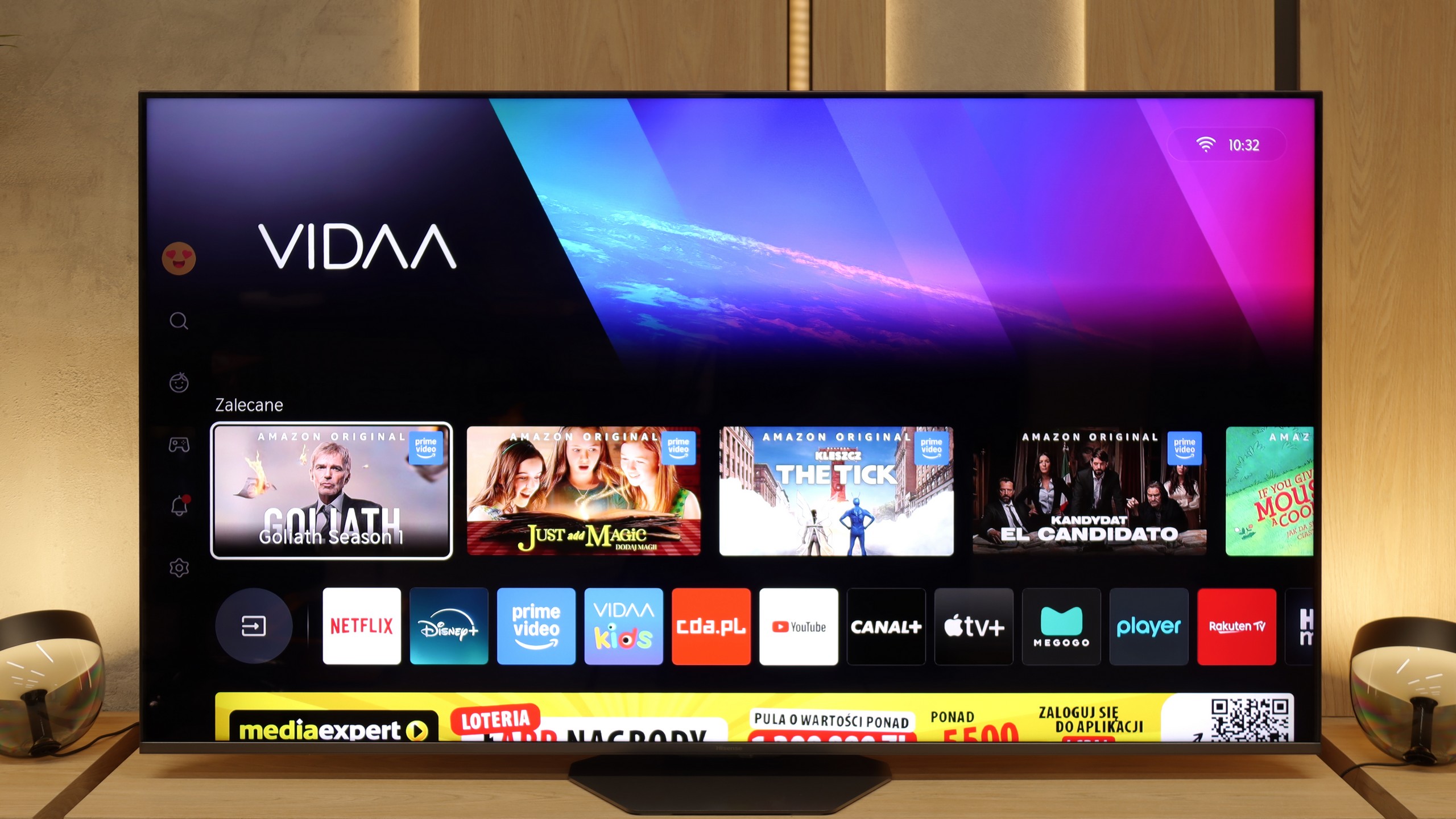
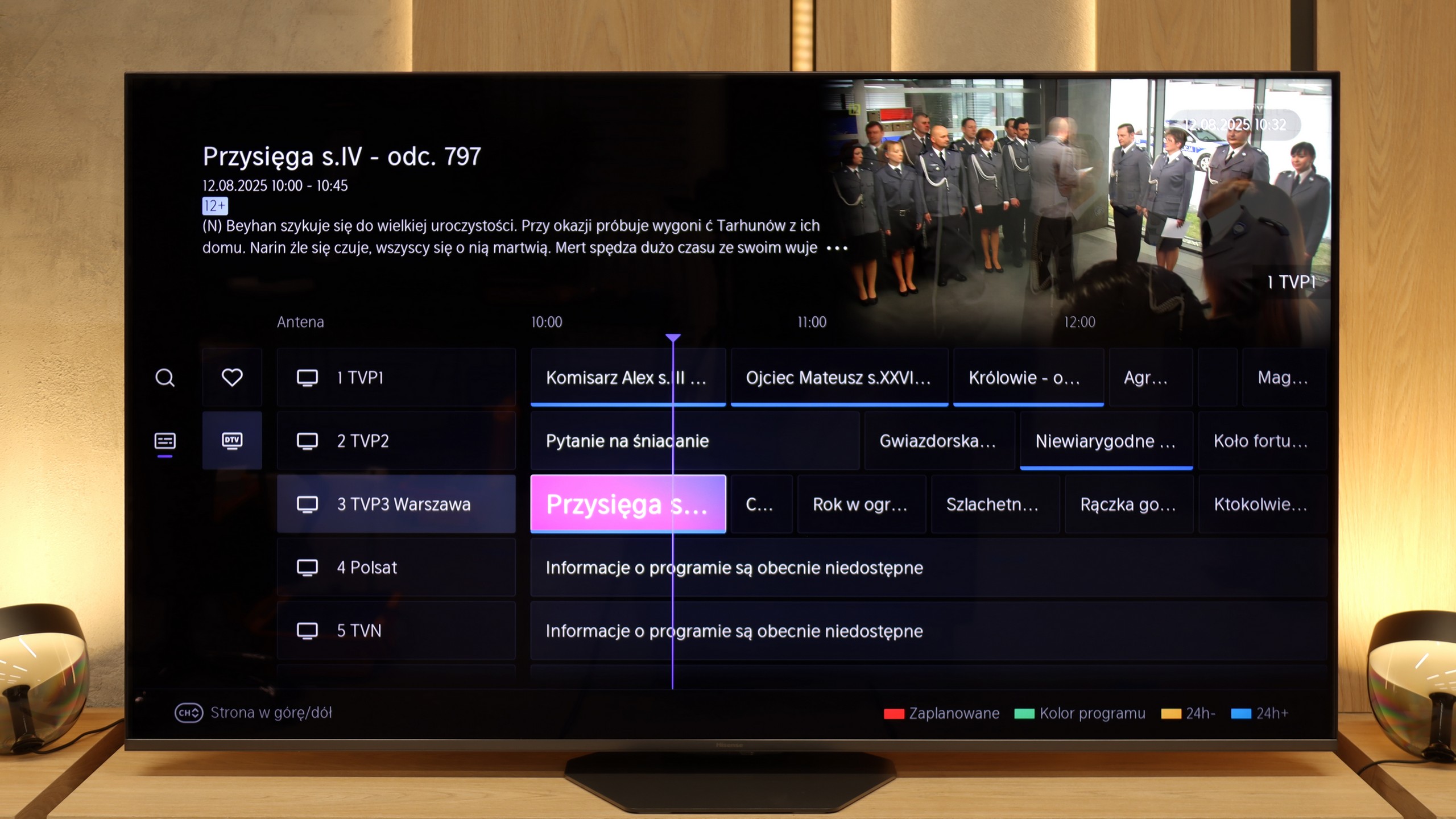
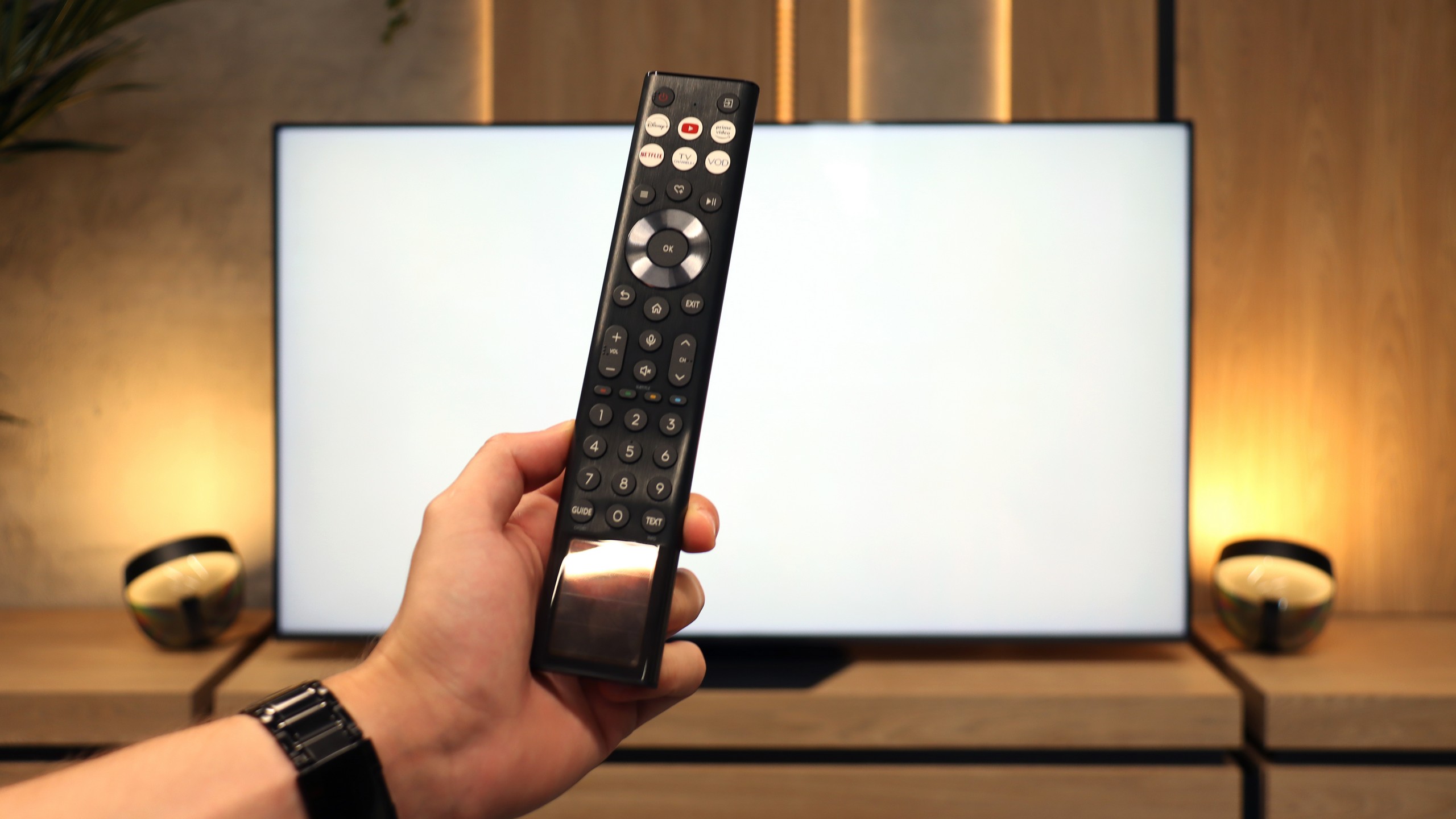
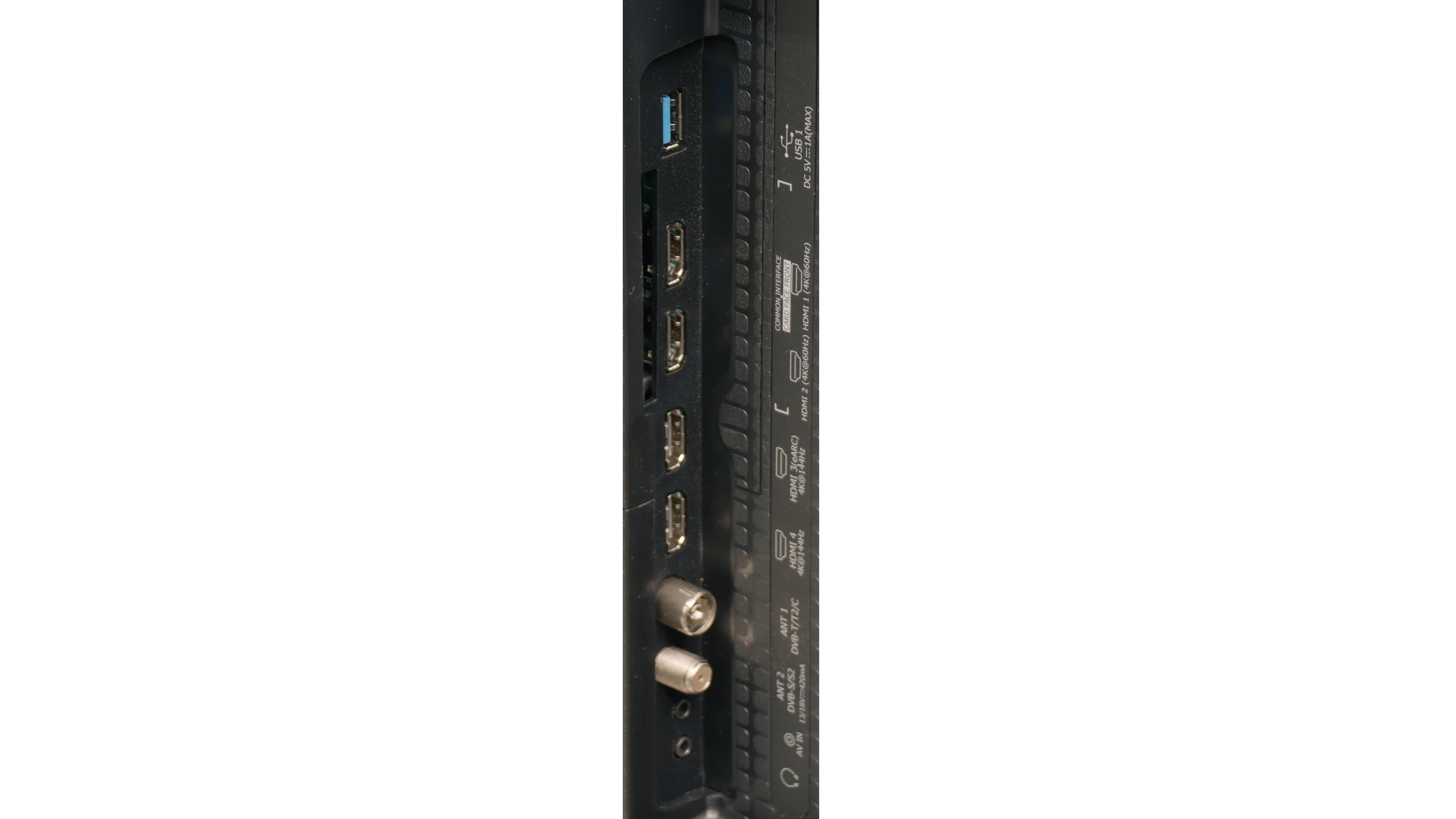
The Samsung S90D television offers a range of features that significantly enhance user comfort, making it an ideal device for entertainment in the comfort of your home. The Tizen system, on which this model is based, is a modern and advanced platform that provides users with an intuitive and seamless experience. Thanks to the user-friendly interface, navigating through applications and settings is quick and intuitive, making it easy to use the television even for those less familiar with technology. Tizen supports a rich set of applications, including all popular streaming services such as Netflix, YouTube, and Amazon Prime Video. A new feature for 2024 is the availability of voice search in Polish. It is also worth noting the eco-friendly solar remote, which is not only environmentally friendly but also practical for everyday use. With it, you can control multiple devices connected to the television, eliminating the need for multiple remotes. Additionally, the television supports AirPlay, enabling easy content sharing from Apple devices such as iPhone or iPad. The S90D also allows for the connection of various Bluetooth devices like mice, keyboards, or headphones, which increases its versatility and allows for user experience personalisation. Furthermore, the SmartThings app significantly enhances the capabilities of the television, allowing integration with other smart home devices. This enables remote management of lighting, security, and other aspects of the home ecosystem. Users can also take advantage of the Philips Hue app, which allows for lighting synchronisation with the image displayed on the screen, creating even more immersive visual experiences. The only downside that can be pointed out is the lack of USB recording support. For some users, this may be a limitation. Despite this, the S90D television offers many advanced features and technologies that make it an excellent choice for anyone seeking high-quality entertainment in their home and wanting to integrate their devices into one convenient system.
Classic Features
Hisense U8Q runs on the VIDAA system, which can still be considered a newcomer in the European market, but it must be acknowledged – the manufacturer really has a lot to offer here. You'll find classic features that many people still find useful: USB recording, a clear EPG guide, and the ability to connect wired headphones, which will be particularly appreciated by seniors. A nice addition is the presence of an audio jack – a connection that is slowly disappearing from televisions, but has been retained here.
USB-C in the TV!
A new feature in the U8Q is the USB-C port with DisplayPort support. This is a non-standard but very practical solution – it allows you to connect a laptop or phone with a single cable, even if those devices don't have an HDMI output.
Smart Features: VIDAA
When it comes to smart features, VIDAA operates smoothly. The interface is fast, apps open without significant delays, and network functions – such as screen mirroring or AirPlay – work very well. Sure, there are some minor shortcomings, but these are more details than real problems. The Achilles' heel remains the somewhat limited app library. However, it's worth remembering that the list of available programs can change from day to day – some disappear, others appear, so the situation may improve.
Playing files from USB
9.1/10
8.3/10
Supported photo formats:
Maximum photo resolution:

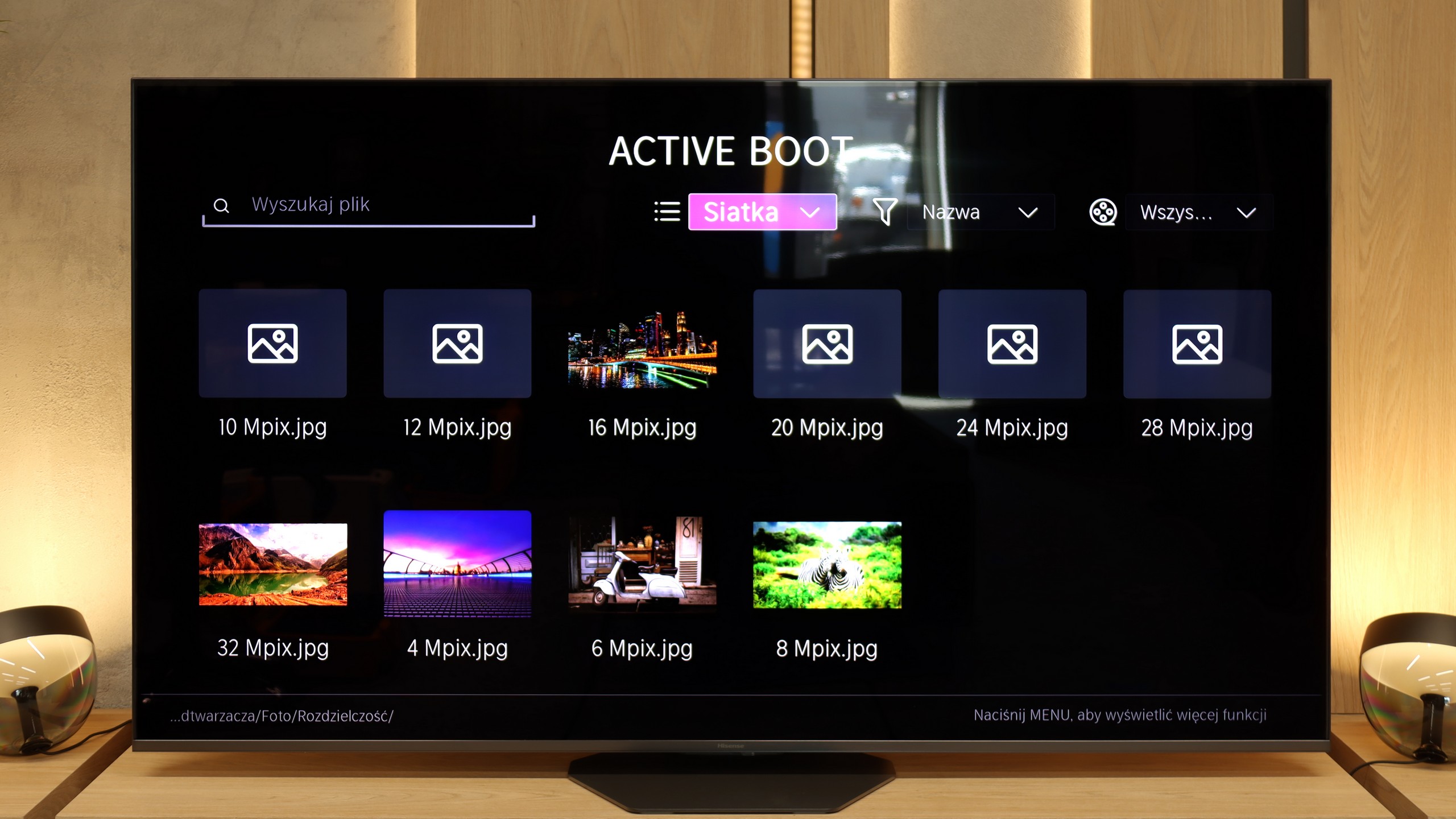
Samsung S90D is fitted with a built-in player that supports most popular video formats, allowing for convenient playback of films from various sources. The player also supports subtitles in Polish and allows users to customise the font colour, enhancing comfort when watching content with subtitles. In terms of photo formats, the television handles many, but one of the few downsides is the inability to play the popular PNG format. Nevertheless, the overall playback capabilities of the S90D are at an excellent level.
The built-in media player in the Hisense U8Q will be completely sufficient for most people. The television opens popular video and audio formats and also handles photos. However, there is a small caveat – not all photo resolutions are supported. Therefore, if we have photographs saved in a very high number of megapixels, they may simply not open. It’s worth bearing this in mind to avoid unpleasant surprises during the family photo show.
Apps
8.7/10
7.7/10














































Sound
7.4/10
7.8/10
- Maximum volume-88dB
- Dolby Digital Plus 7.1
- Dolby True HD 7.1
- Dolby Atmos in Dolby Digital Plus (JOC)
- Dolby Atmos in Dolby True HD
- DTS:X in DTS-HD MA
- DTS-HD Master Audio
The Samsung S90D TV is equipped with a 2.1 audio system boasting a total power of 40 W, delivering clear and dynamic sound. With a subwoofer located at the bottom of the casing, the bass is deep and palpable, while the mid and high tones remain well-balanced. It's worth noting that the twin model S94D offers an even more advanced 2.1.2 speaker setup with a power of 60 W. If the silver colour of the S94D casing is not a drawback, and the price difference between these models is minimal, it’s worth considering the version with the “4” at the end. Despite lacking support for the DTS format, the S90D TV utilises other advanced sound technologies such as Dolby Atmos and Dolby Digital Plus, providing spacious and immersive sound. It is also worth mentioning the presence of the proprietary Q-Symphony feature, which allows synchronisation of the TV's speakers with the manufacturer's soundbar.
The Hisense U8Q performs really well in terms of sound. The audio is pleasant, with a slight bass and quite decent mid tones, so it’s perfectly adequate for everyday viewing of movies, series, or gaming.
It does get a bit worse when we crank the volume up to 100%. That’s a rather rare scenario, but it’s worth mentioning. With very strong bass, the rear speakers start to work so intensely that the TV can slightly “rattle,” and the sound takes on an unpleasant, plastic echo. Therefore, it’s best to keep the volume between 70–80% – at that level, the U8Q sounds clear and enjoyable, without any unwanted effects.
Acoustic Measurements
No acoustic data
88dBC (Max)
75dBC


